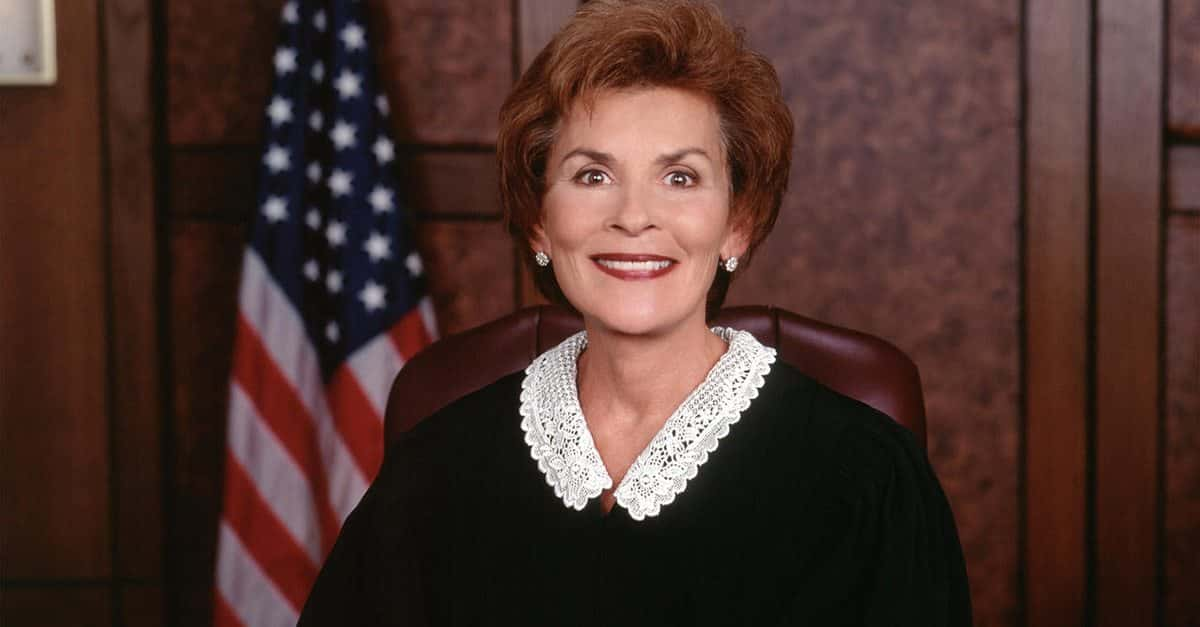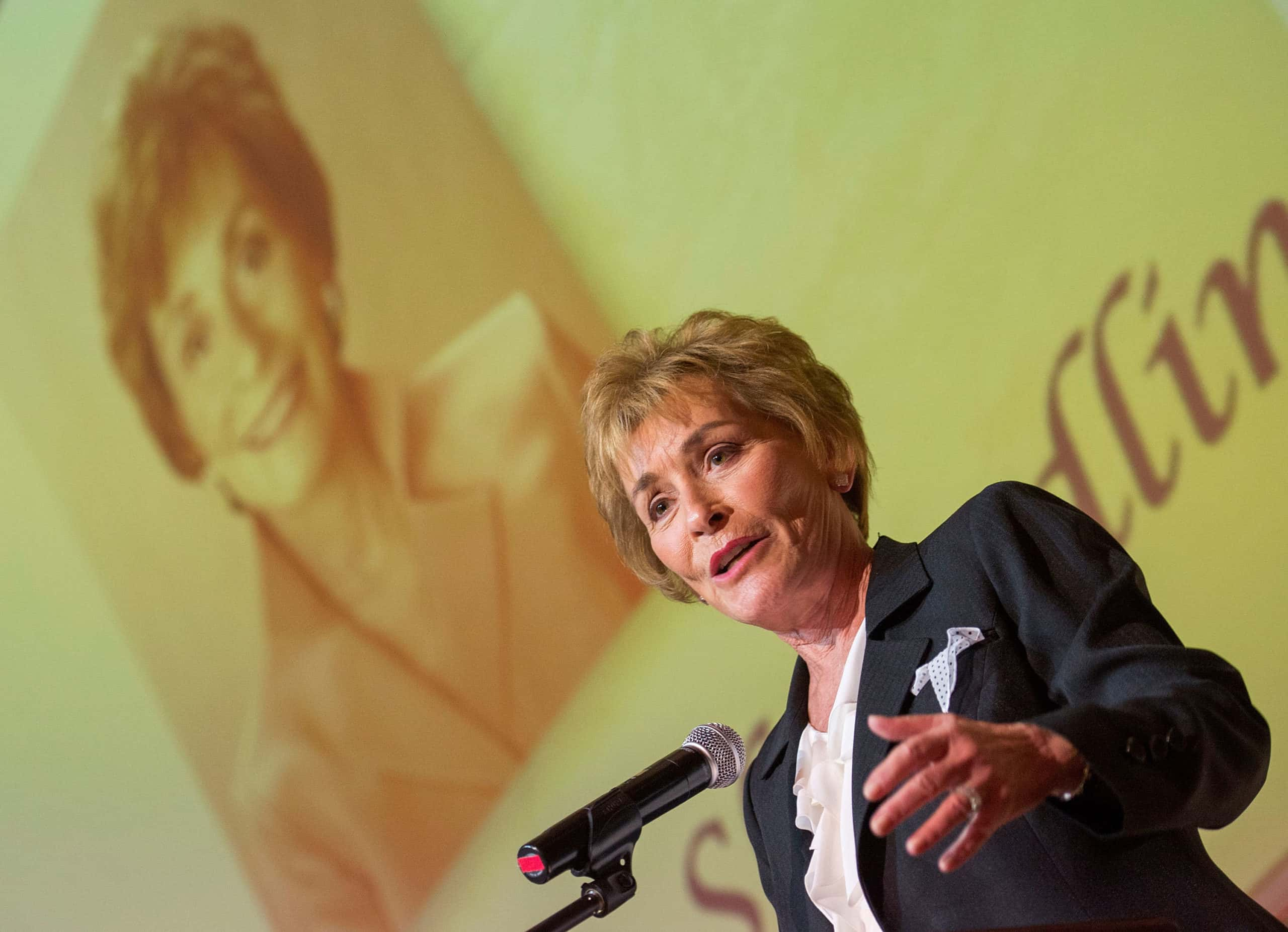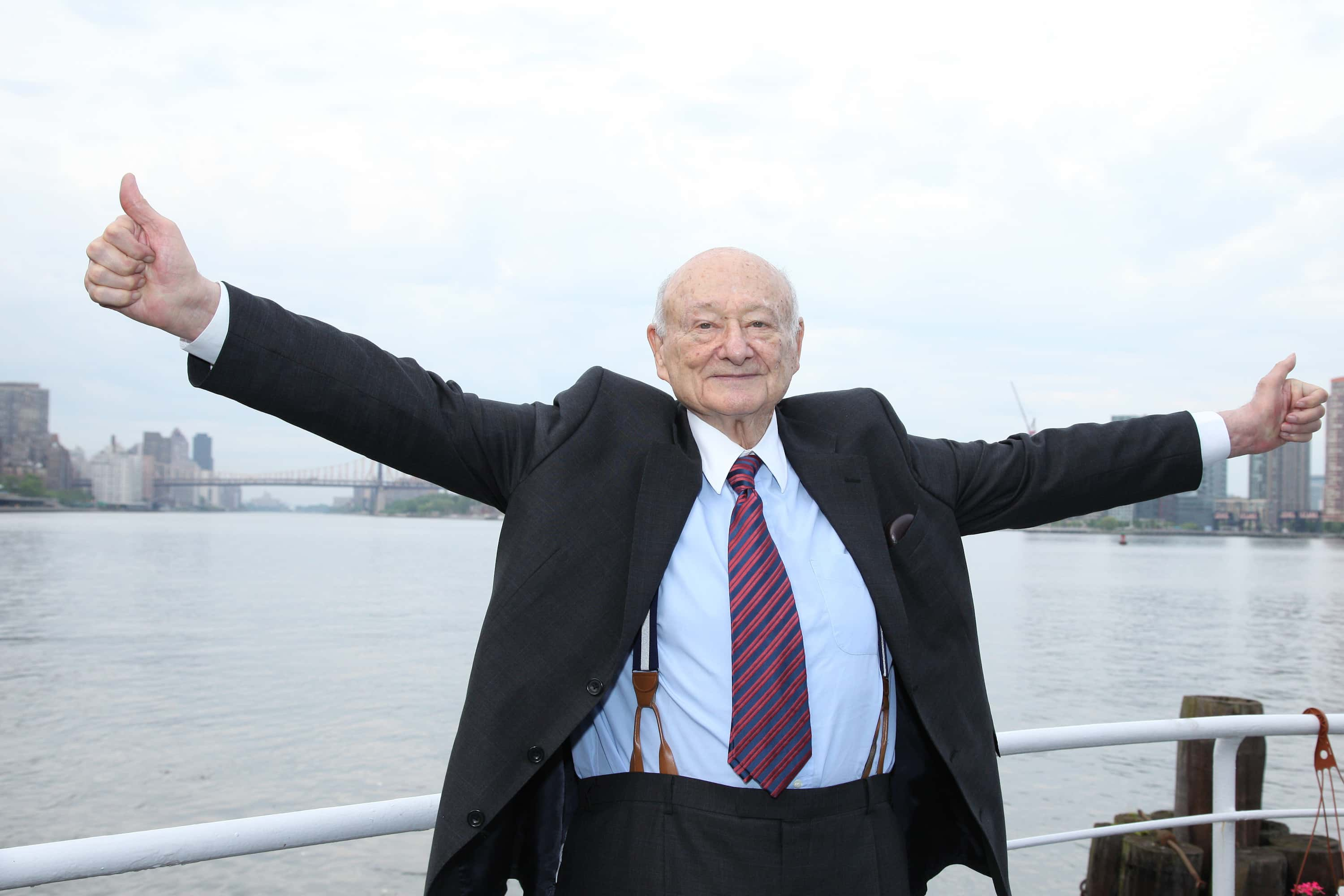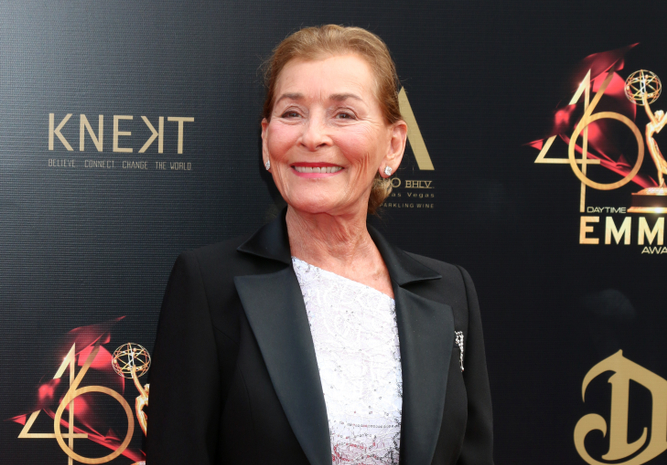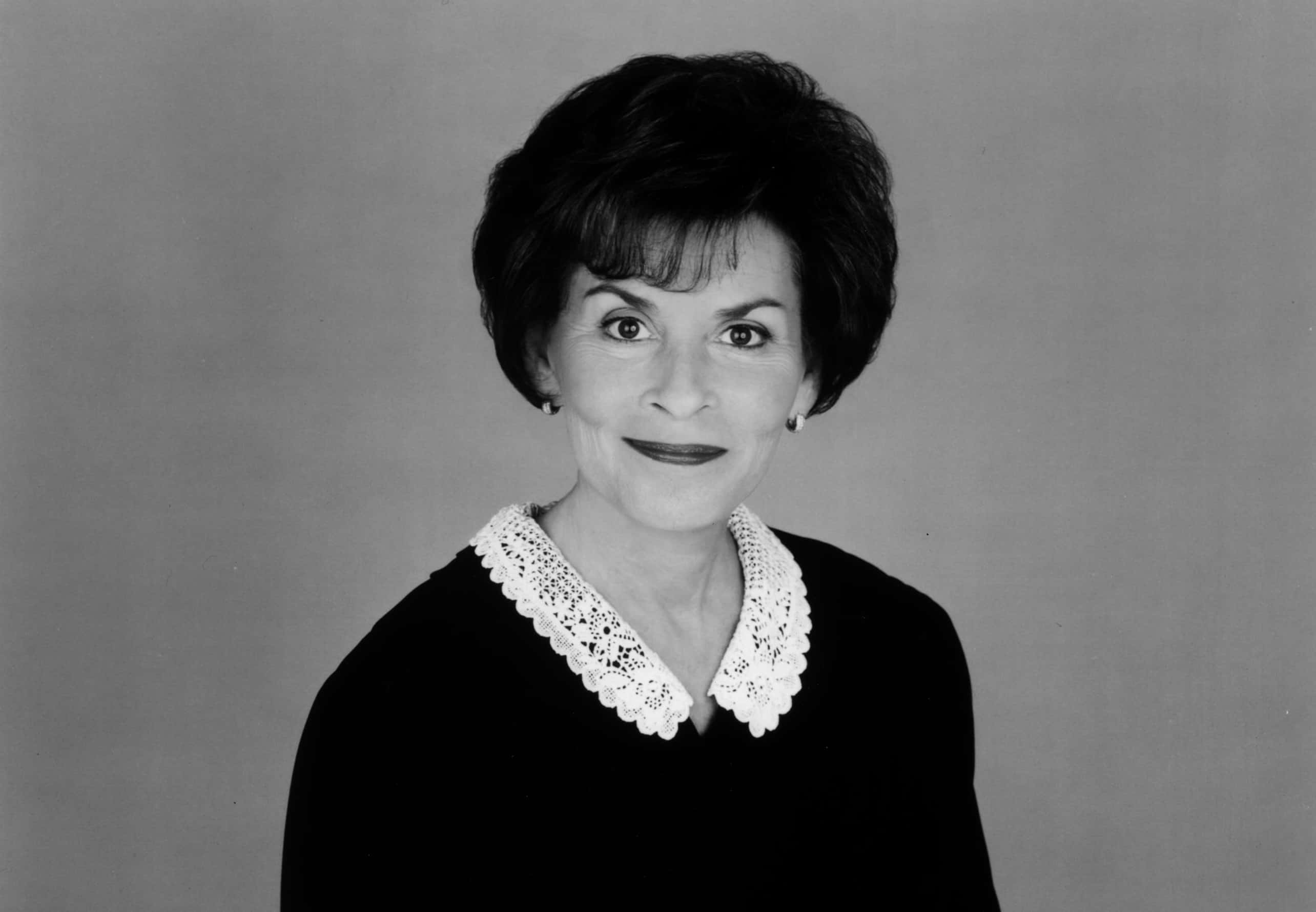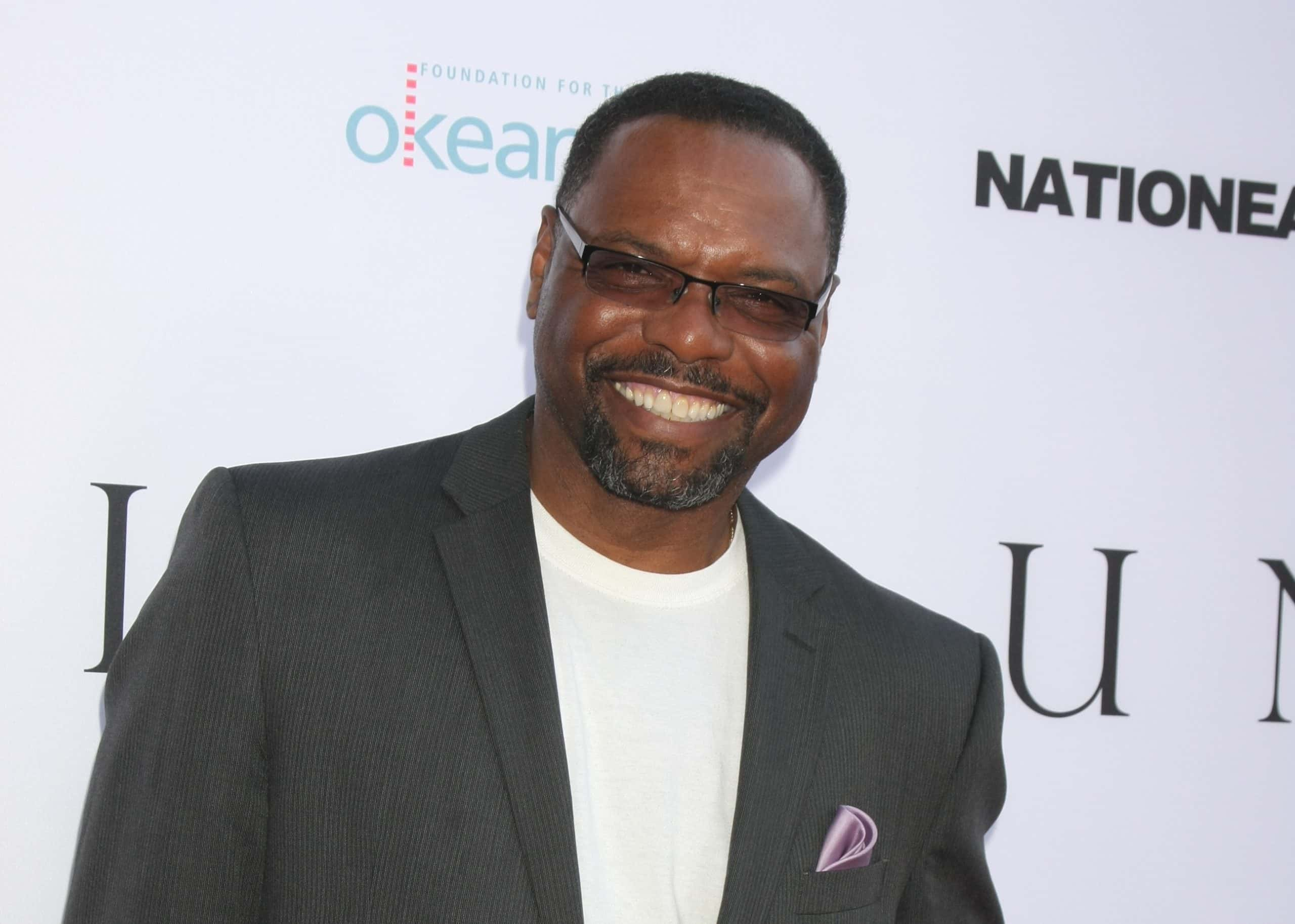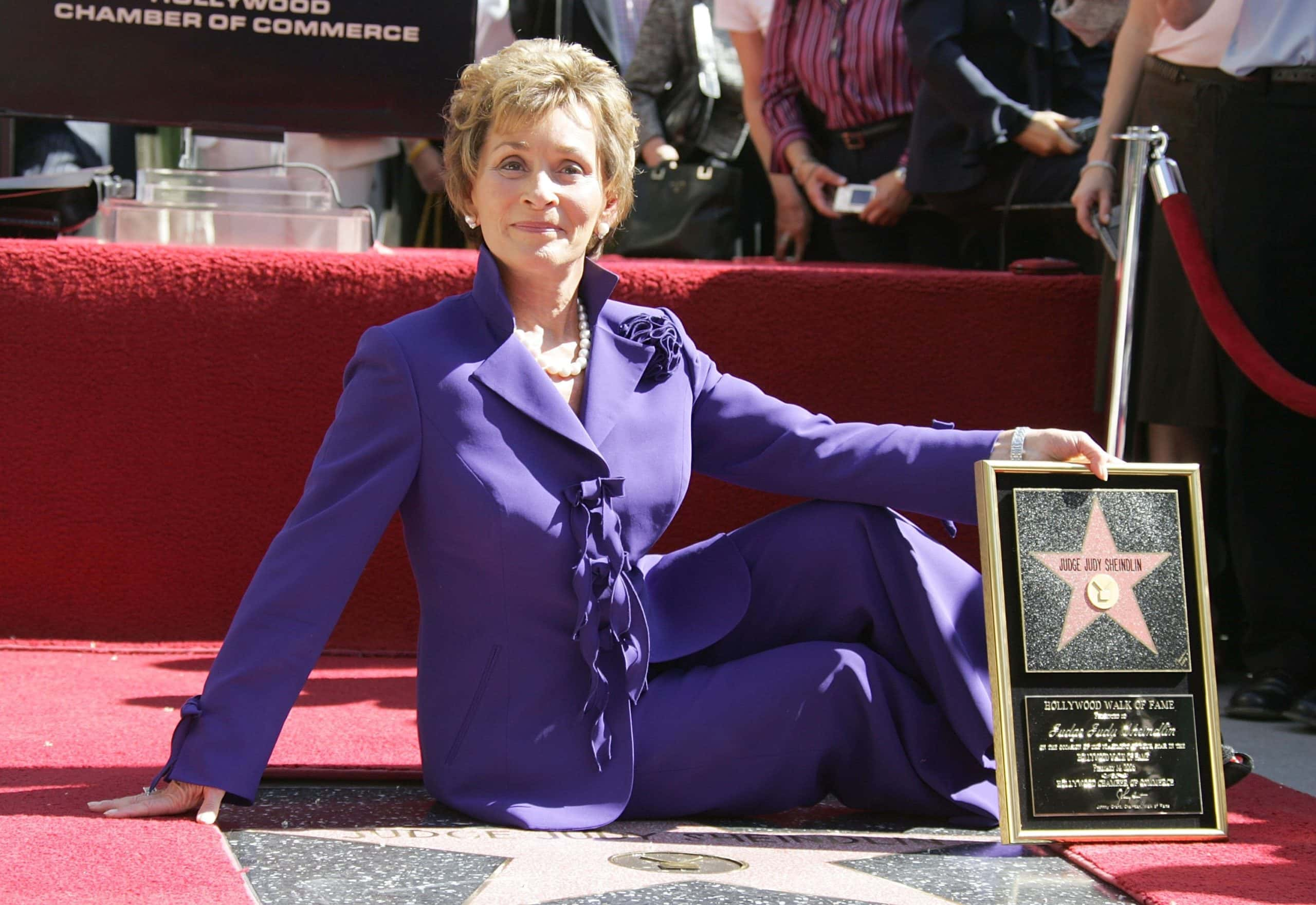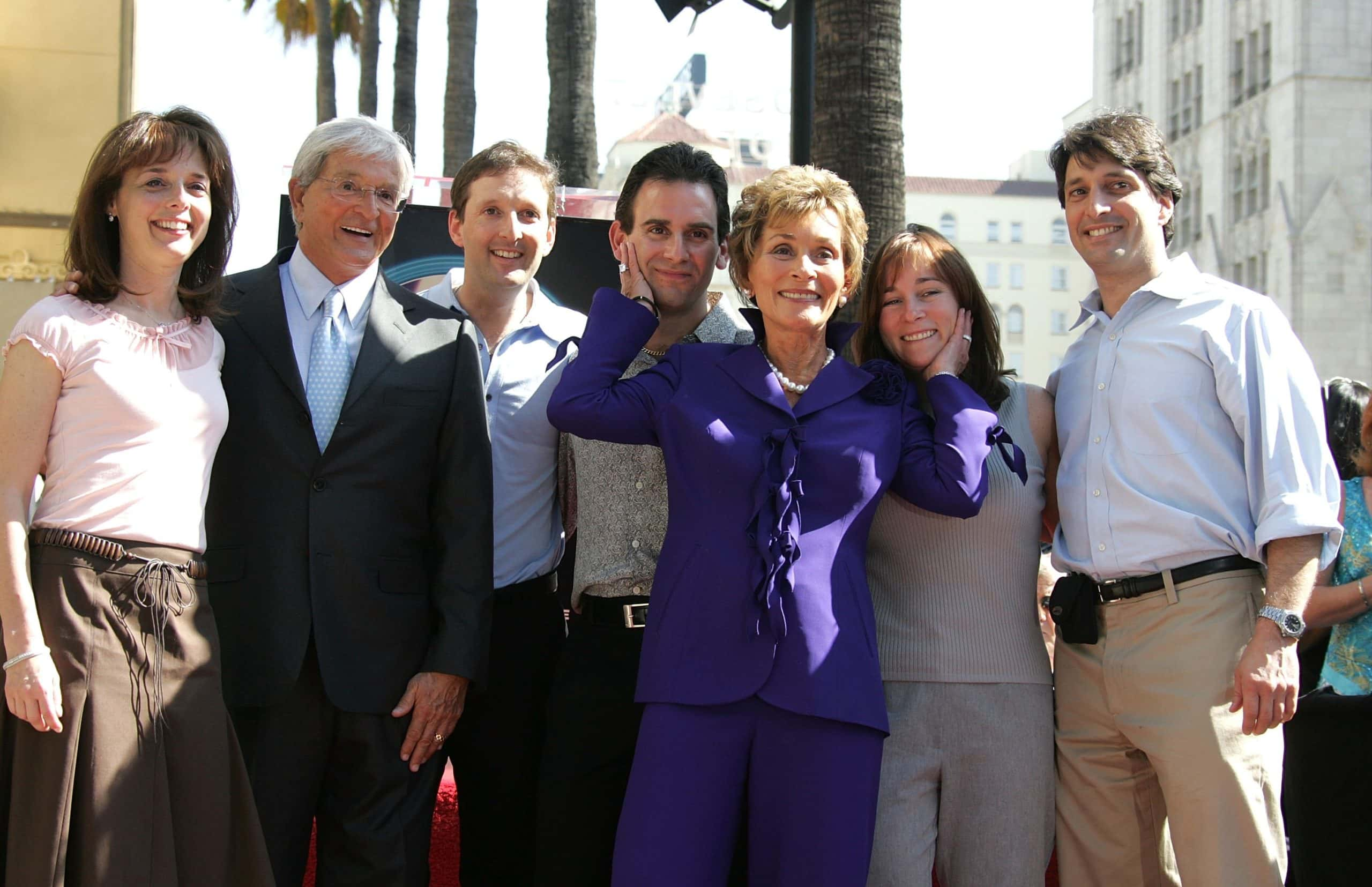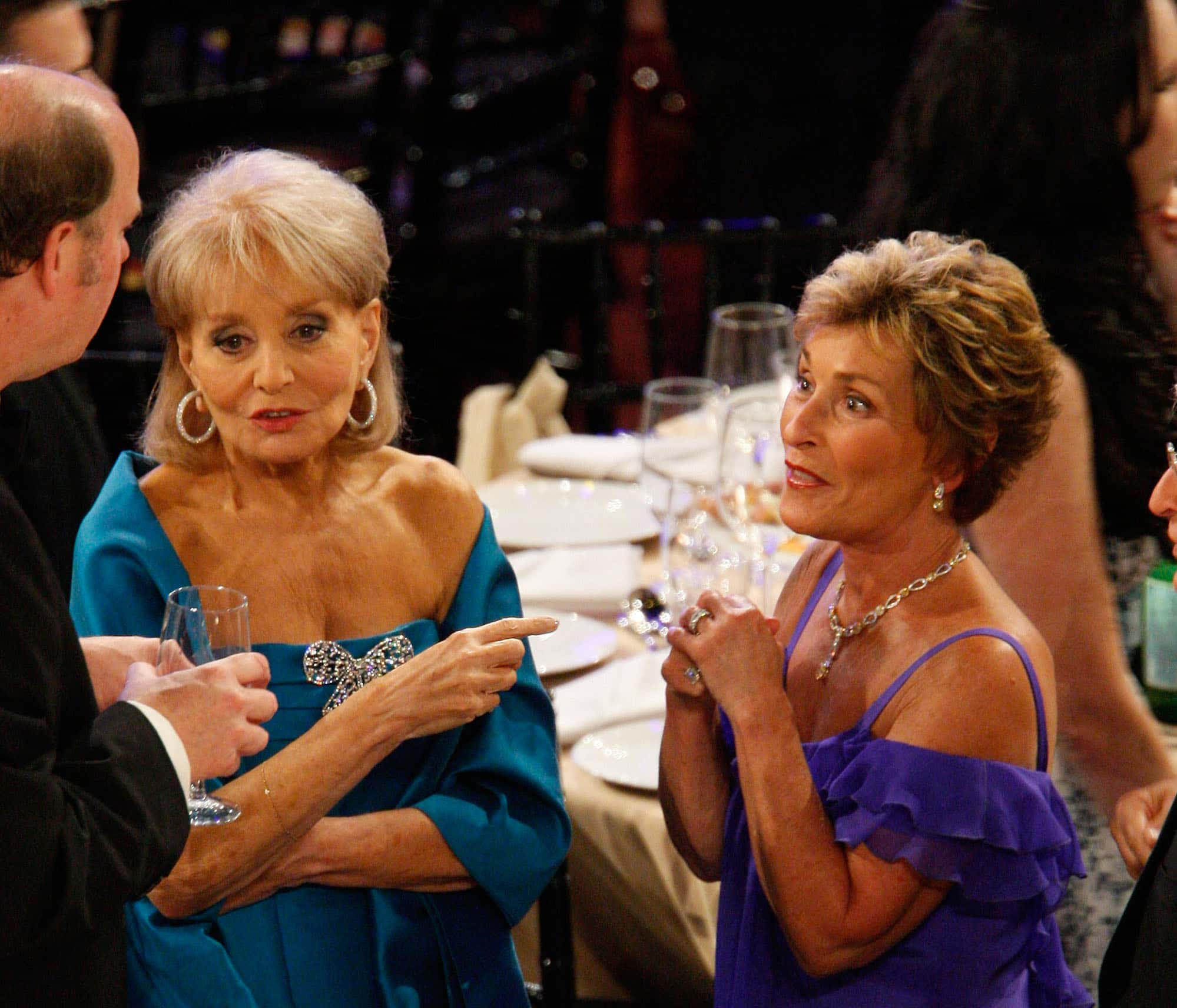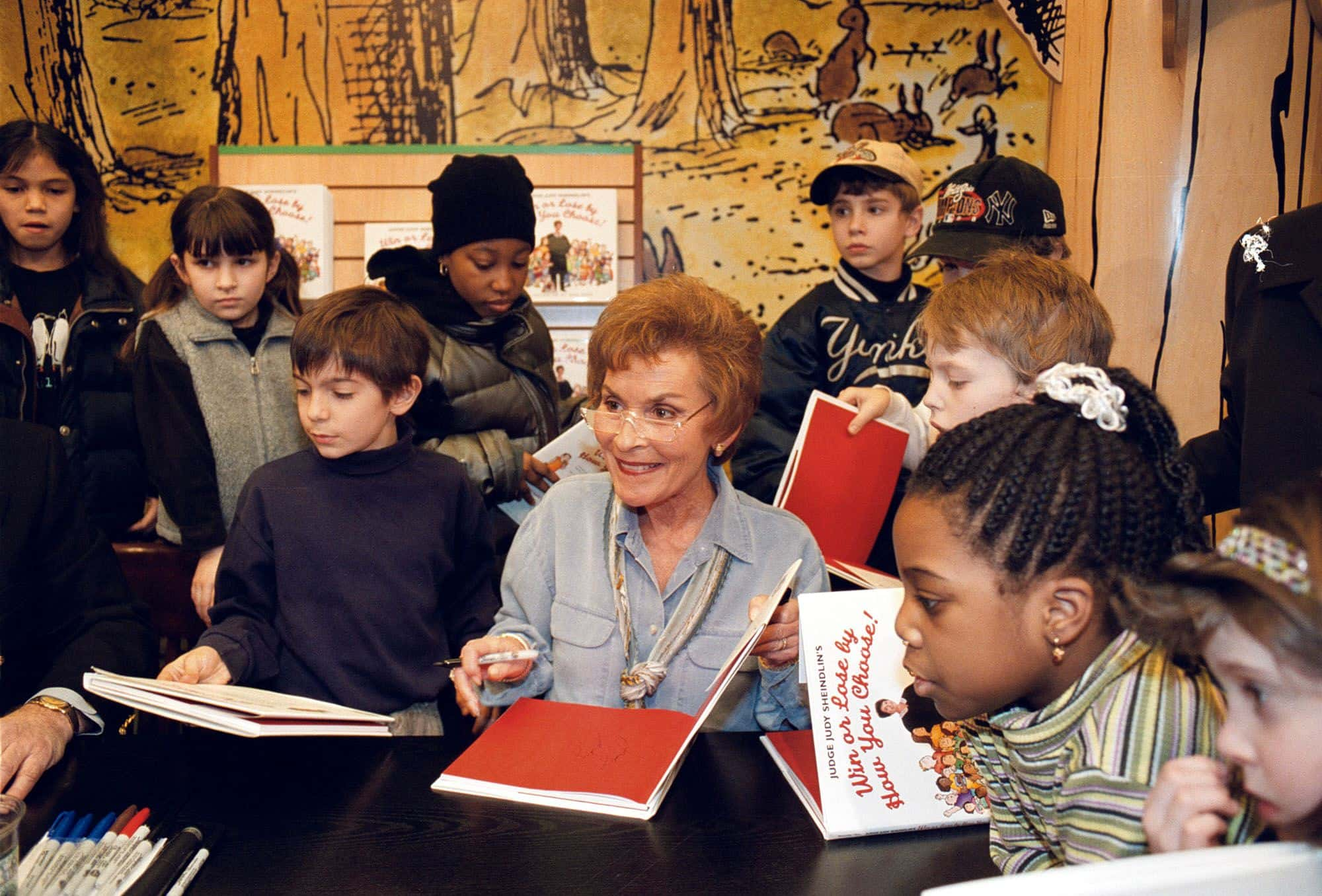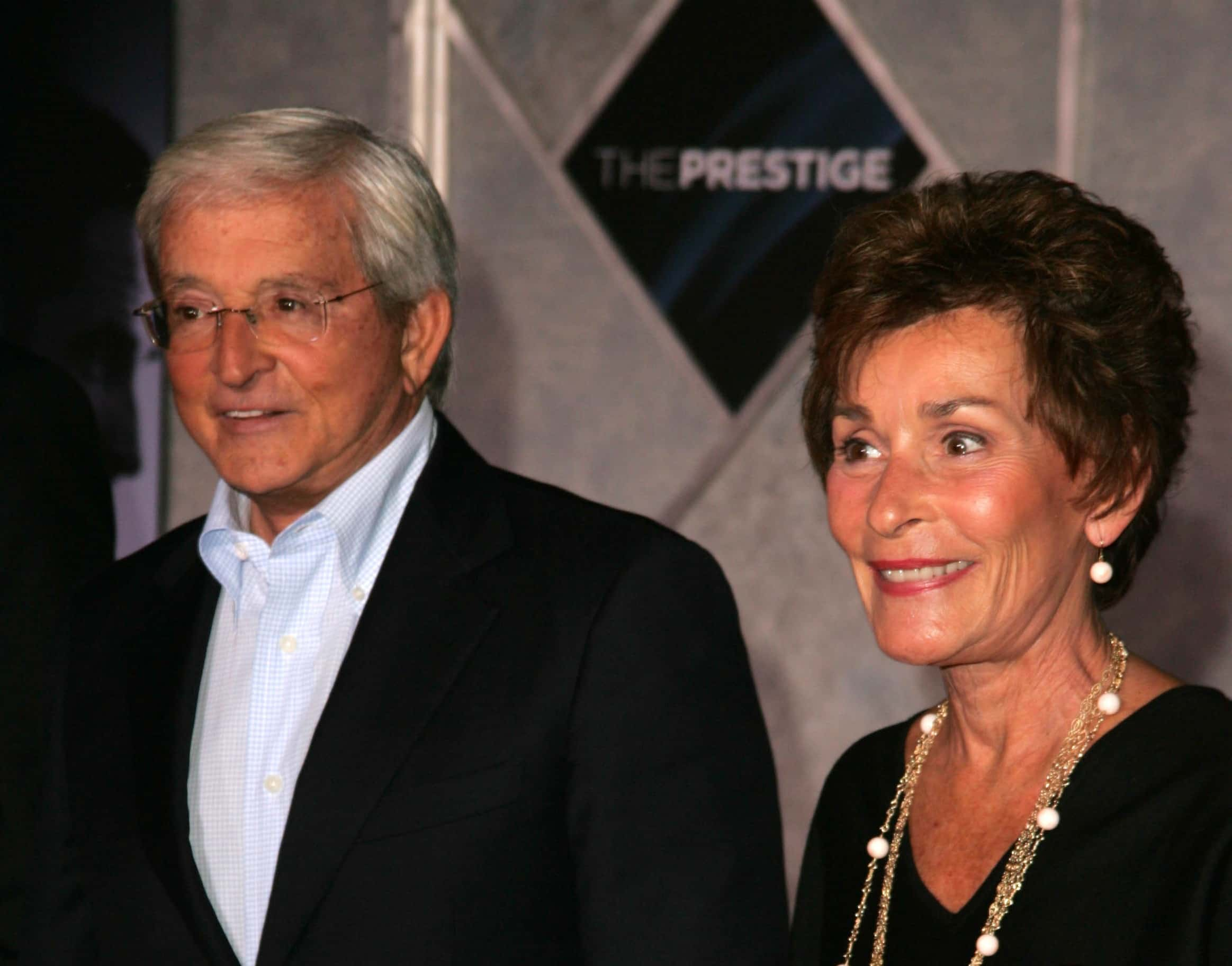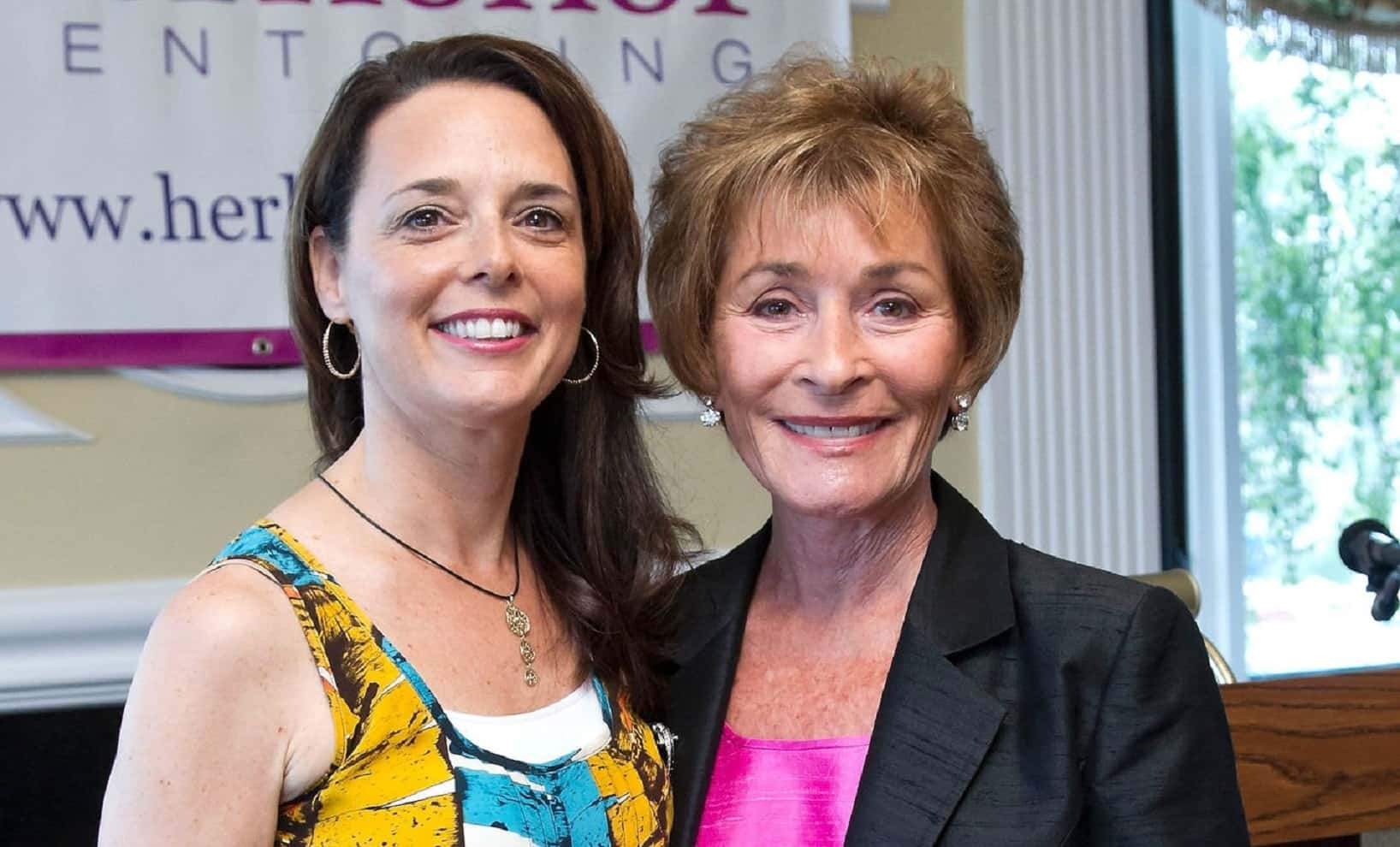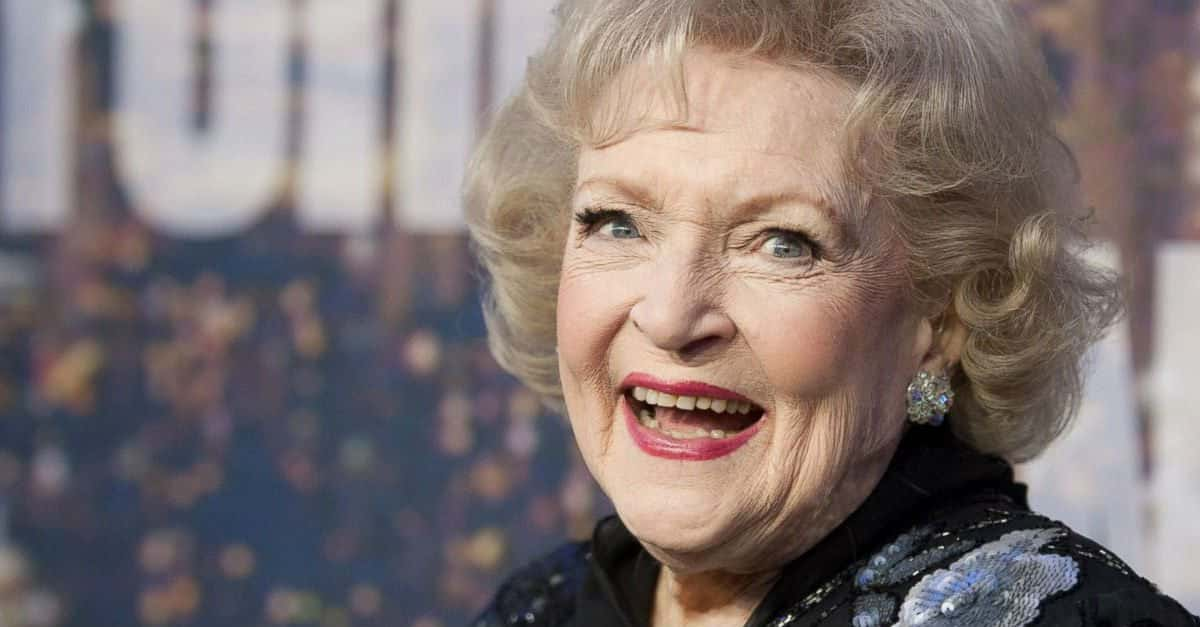“Beauty fades, dumb is forever.” – Judith Sheindlin
“I’m speaking! If you interrupt again madam, your case is dismissed, and I’m throwing you out. Do we understand each other?” – Judith Sheindlin
Judge Judy may not be on the actual Supreme Court, but she certainly reigns supreme on daytime TV! Here are our favorite facts about Jude Judy.
Judge Judy Facts
1. Sticking it to the stupid.
Judge Judy spent over 20 years in New York City’s family court system. Throughout her tenure, she earned a reputation for being blunt, impatient, and tough-talking. “I can’t stand stupid, and I can’t stand slow.”
 Susan Roberts, CC BY-SA 2.0, Wikimedia Commons
Susan Roberts, CC BY-SA 2.0, Wikimedia Commons
2. The rulings are final.
Plaintiffs and defendants appearing on the show sign a waiver and agree that the Judith’s decision is final. Cases cannot be pursued elsewhere unless Judith’s ruling dismissed without prejudice.
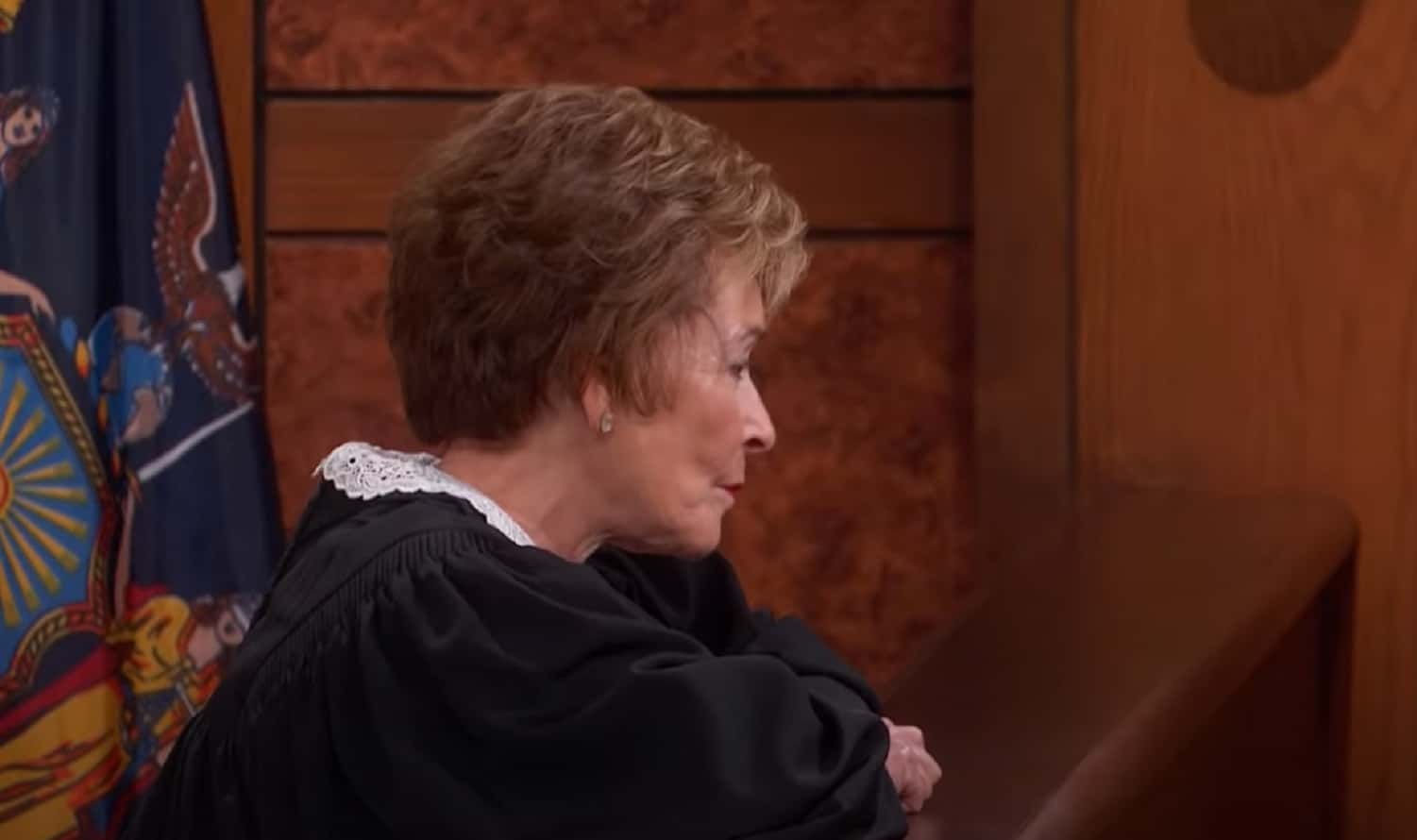 Paramount, Judge Judy (1996-2021)
Paramount, Judge Judy (1996-2021)
3. Tough as nails in 1993.
She frequently warns attorneys appearing before her that she wants, “first-time offenders to think of their appearance in my courtroom as the second-worst experience of their lives ... circumcision being the first." 60 Minutes filmed her in action as part of a 1993 profile. While her hair color and eyebrows have softened since then, her verbal smack-downs haven’t changed a bit.
4. Panic!
An earth quake once hit the studio while filming Judge Judy. As the room started to shake, Judge Judy took cover behind her bench, while terrified audience members fled from the courtroom.
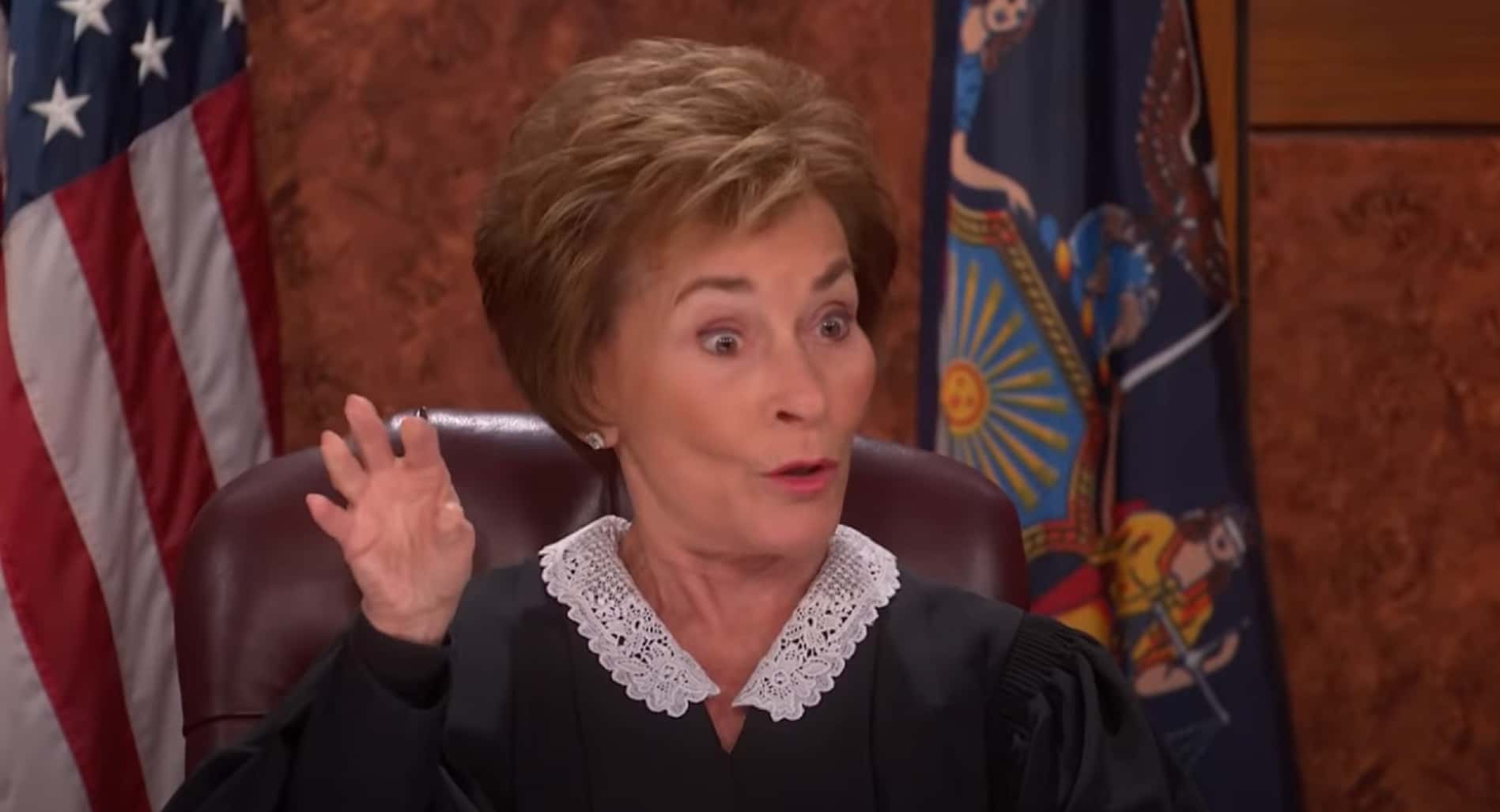 Paramount, Judge Judy (1996-2021)
Paramount, Judge Judy (1996-2021)
5. New York appointed.
In 1982, New York City Mayor Ed Koch appointed Judith Sheindlin to the bench.
6. California filmed.
Despite the New York City scenery spliced into the show, Jude Judy is filmed in California. Judith flies to California via private jet to shoot. The scenic Manhattan footage in between station breaks and the New York state flag behind her chair fools most viewers into thinking it’s shot in New York City.
7. Fifty-two days for a whole lot of Judy.
Sheindlin spends 52 days per year taping her show. She flies to California every other Monday to film and hears cases on Tuesday and Wednesday. A full week’s worth of material is filmed each day.
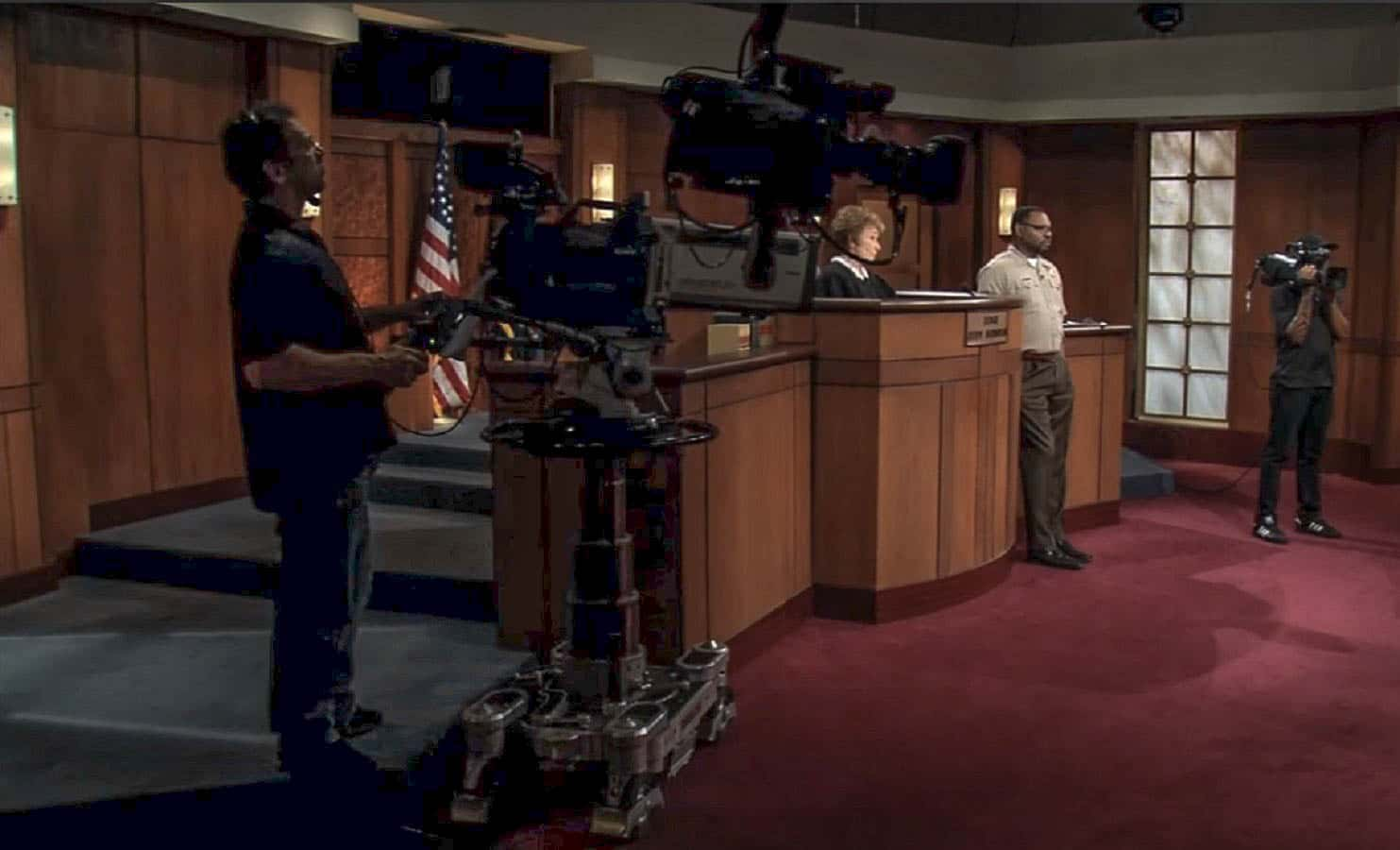 Paramount, Judge Judy (1996-2021)
Paramount, Judge Judy (1996-2021)
8. Fashion behind the bench.
She began wearing her trademark lace collar right after she was appointed a judge. To celebrate, she and her husband Jerry—both civil servants at the time—took a $399 package trip to Greece. She purchased a white lace collar from a street-side vendor. She explained to her husband that male judges wore stiff-collared shirts and colorful ties as a colorful “buffer” between the austere gown and their face. Female judges had nothing but neck, and the unforgiving black robe highlighted sleep deprivation and skin tone irregularities. The white lace collar, she decided, would not only perk up her face but also would also be a bit disarming for litigants.
9. Never unprepared.
She’s briefed on cases before the show. Ever wonder how she sorts through the mountain of lies and irrelevant testimony so quickly? Judge Sheindlin does not go to the studio unprepared. She familiarizes herself with case details prior to filming, but she doesn’t do the full prep she would have done in her non-televised courtroom in 1982: she wants cases to appear “fresh” onscreen.
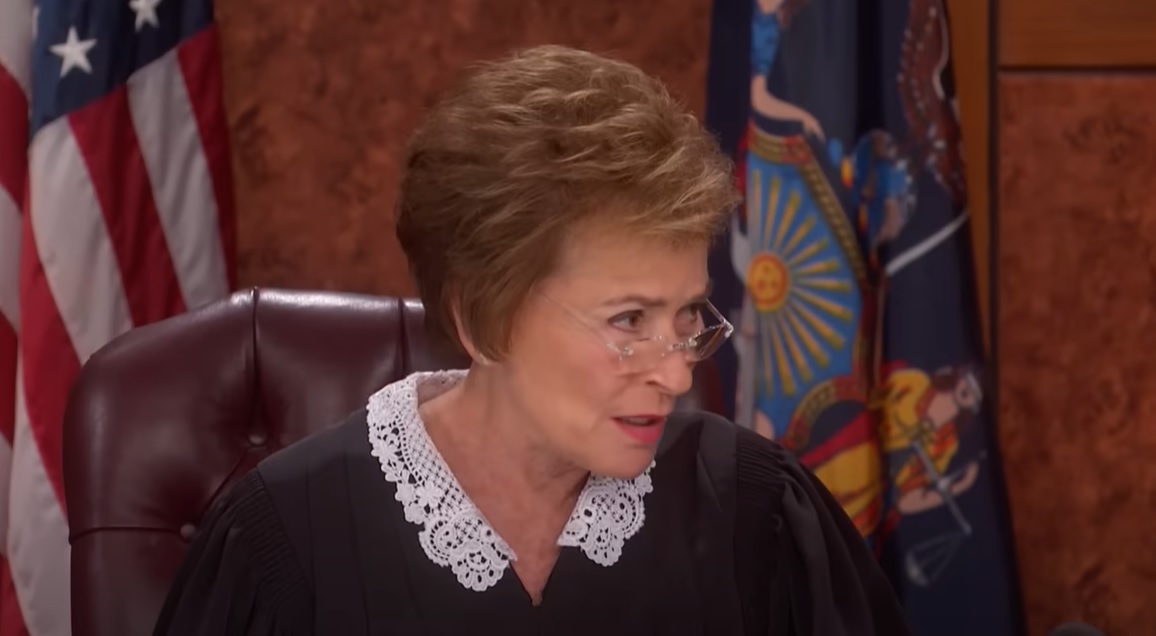 Paramount, Judge Judy (1996-2021)
Paramount, Judge Judy (1996-2021)

History's most fascinating stories and darkest secrets, delivered to your inbox daily.
10. Real people.
The cases really are real. The production company staffs 60-plus researchers who examine lawsuits filed in local small claims courts. When they find cases sure to make for exciting television, they contact the litigants and ask them to participate on the show.
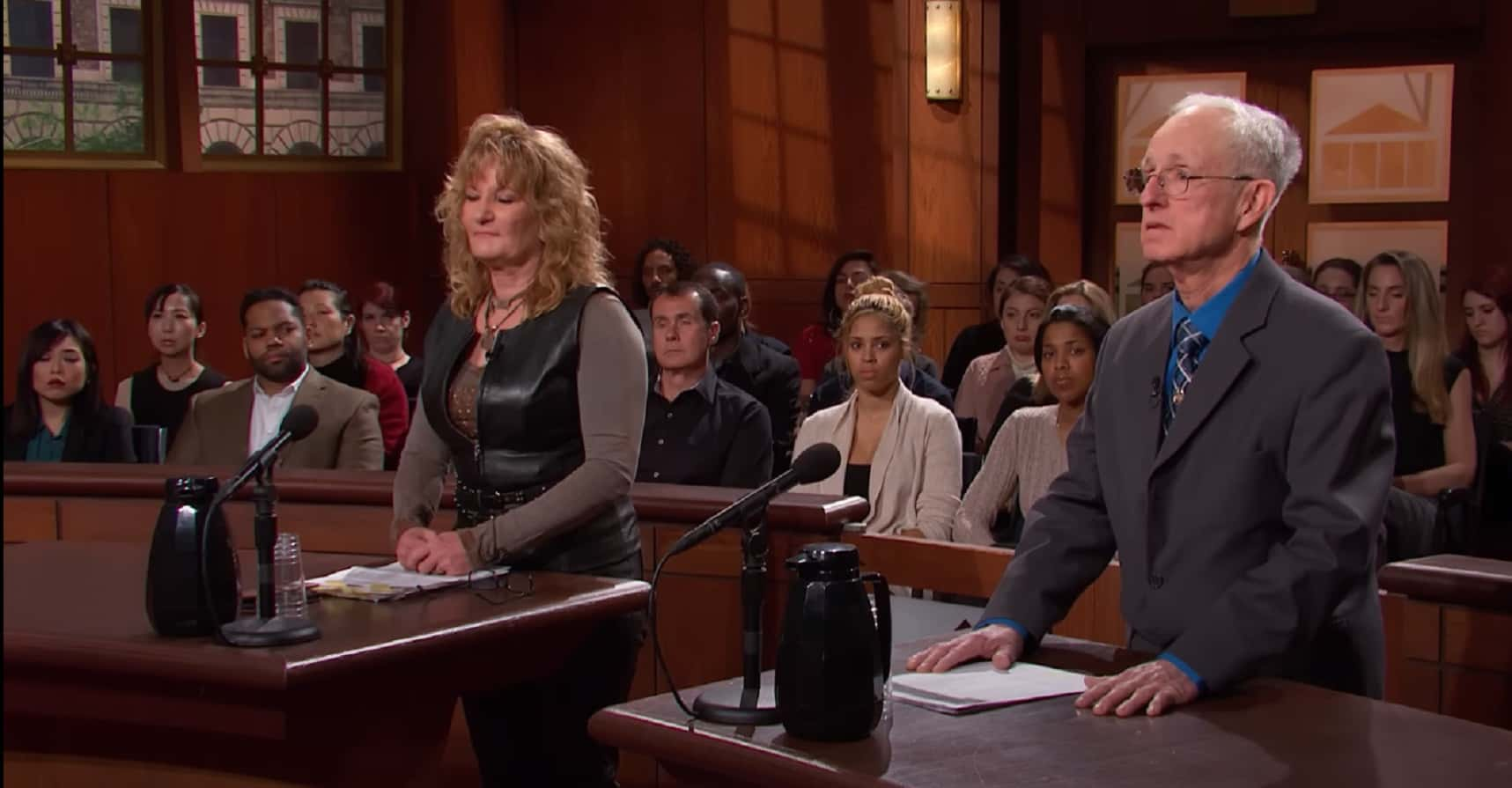 Paramount, Judge Judy (1996-2021)
Paramount, Judge Judy (1996-2021)
11. Incentives to be made a fool.
For the litigants, agreeing to be on the show takes a lot of the risk out of small claims court. The litigants get a free trip to Los Angeles, an $850 appearance fee, and a per diem of $40. Even better, judgments awarded are paid by the show, not by the plaintiff or defendant. That’s not to say it’s risk free – there’s still a big risk that Judy tears you to pieces and makes you look like an idiot.
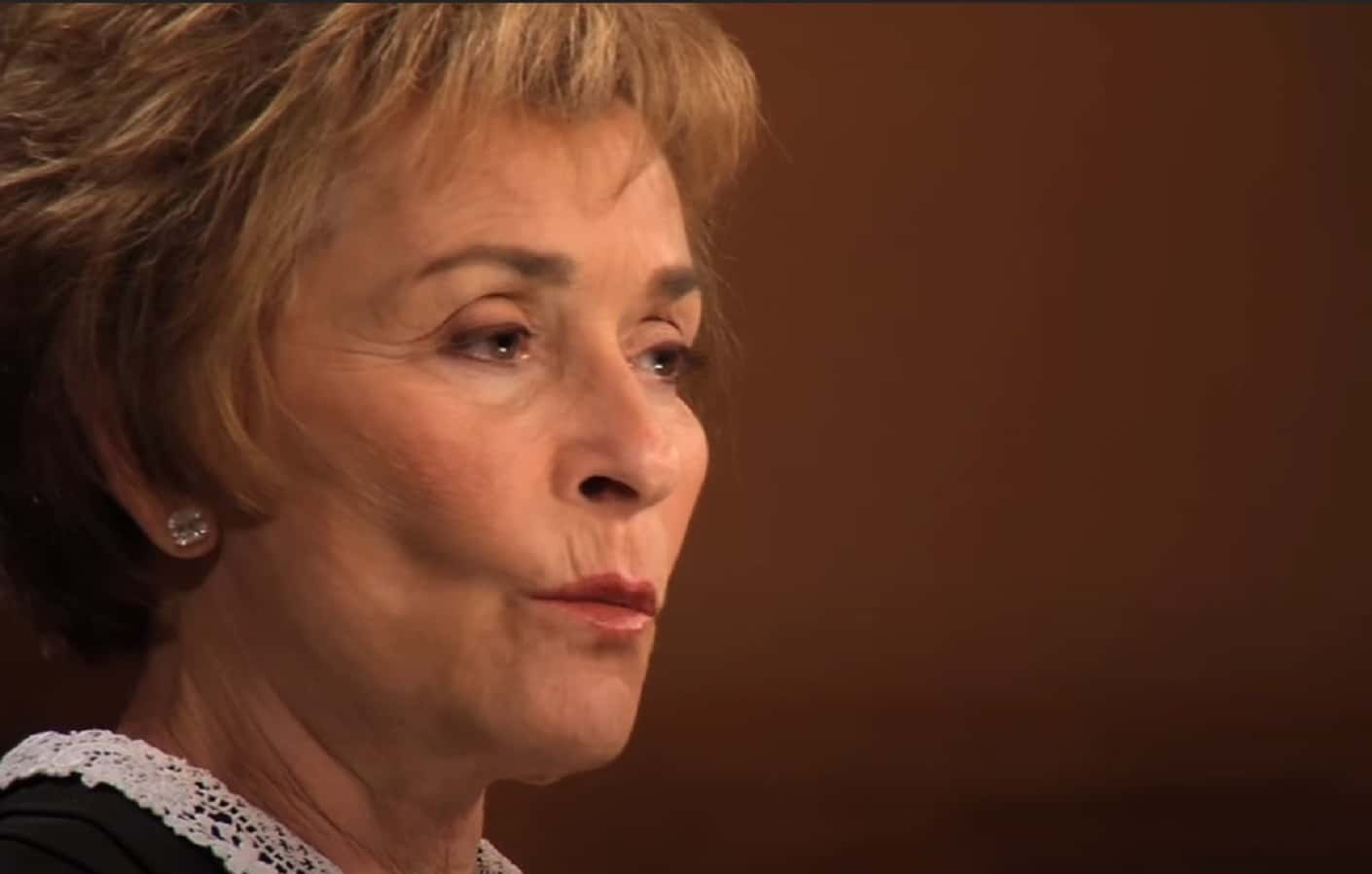 Paramount, Judge Judy (1996-2021)
Paramount, Judge Judy (1996-2021)
12. Making like Cupid.
Producers shoot for the heart. The producers know that the best cases are those that involve litigants with a prior relationship. Such cases engage the audience on an emotional level.
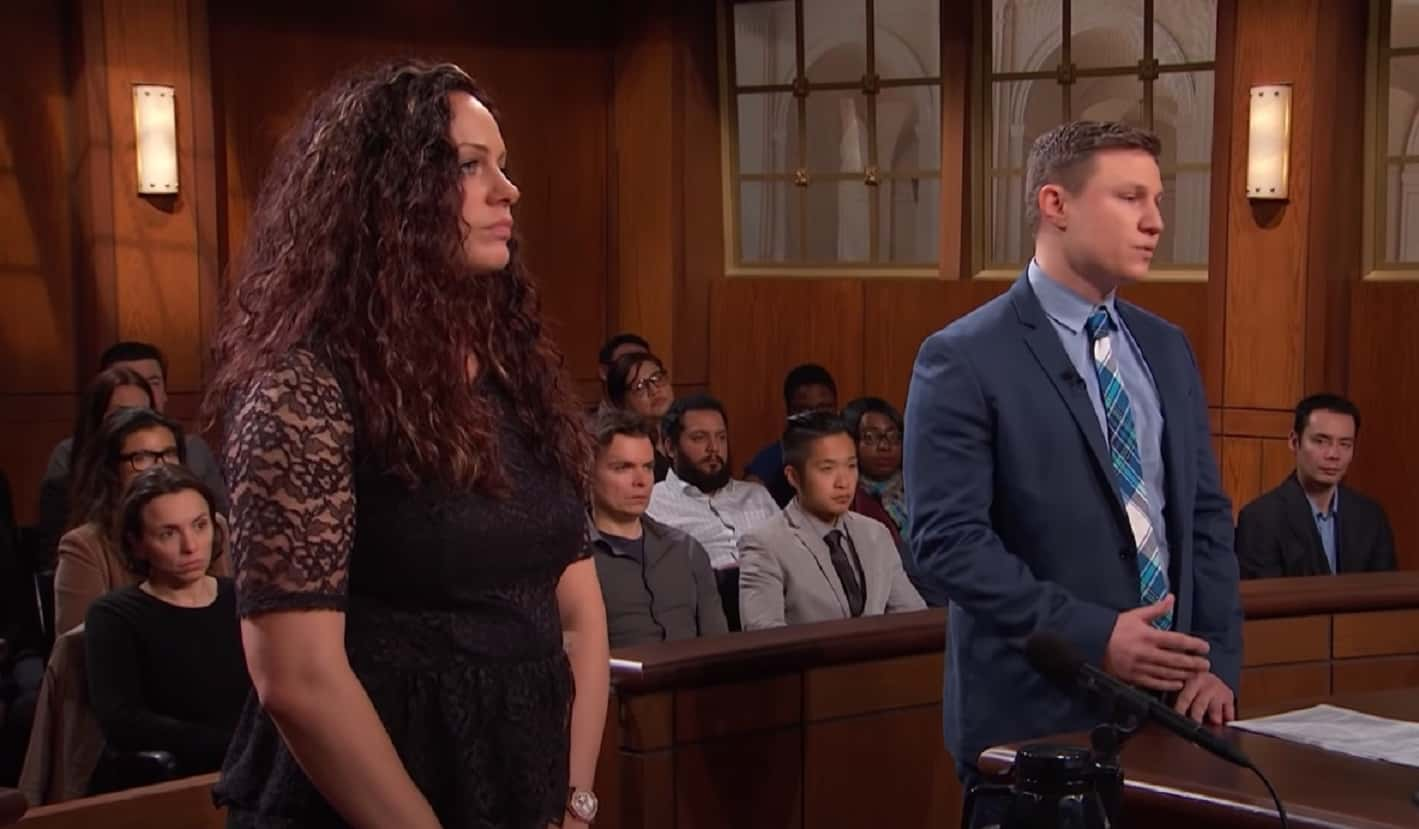 Paramount, Judge Judy (1996-2021)
Paramount, Judge Judy (1996-2021)
13. Sit like a pro.
Regular viewers may notice that the same faces pop up in the audience. Those folks are paid extras who earn $8 per hour to sit and look attentive.
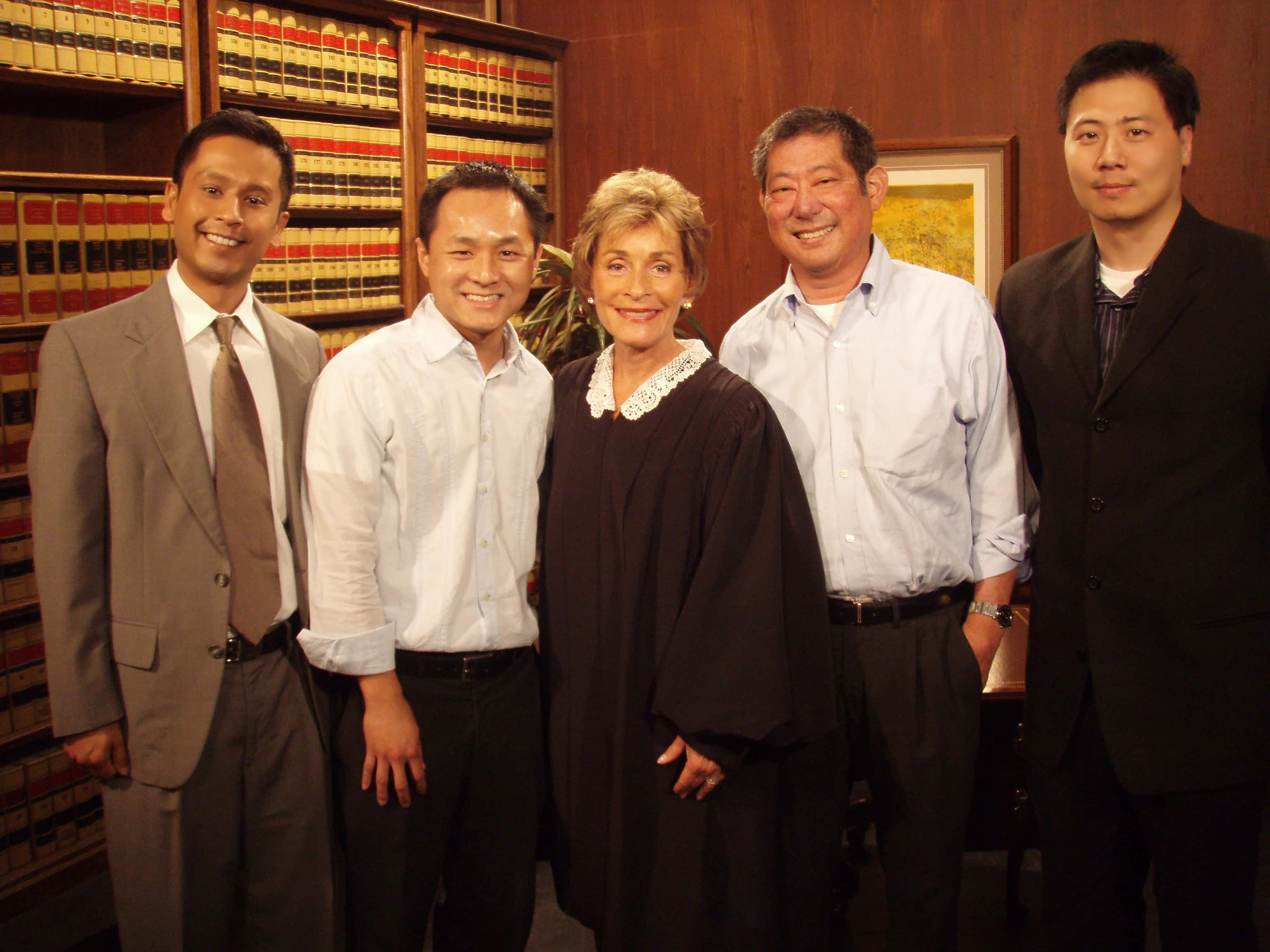 Iaguna172, CC BY-SA 2.0, Wikimedia Commons
Iaguna172, CC BY-SA 2.0, Wikimedia Commons
14. Sitting like a pro isn’t easy.
If chosen, the professional audience members must dress appropriately (business casual or better) and arrive for the 8:30 a.m. call time. They pass through metal detectors on their way in because cell phones and other electronic devices are not permitted. Sneaking in food, drink, or even chewing gum is grounds for expulsion.
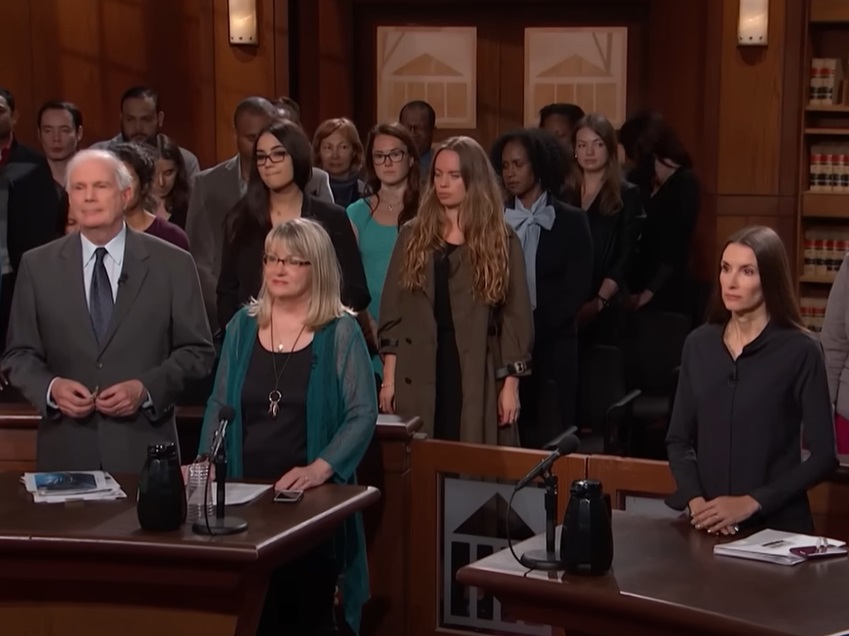 Paramount, Judge Judy (1996-2021)
Paramount, Judge Judy (1996-2021)
15. Musical chairs.
Spectators are rearranged after each case so it’s less obvious that it’s the same group of extras. The most attractive folks are always seated in the front row. Between each case, the audience is instructed to talk chat amongst themselves so that Officer Byrd’s “Order in the court!” admonition has more impact.
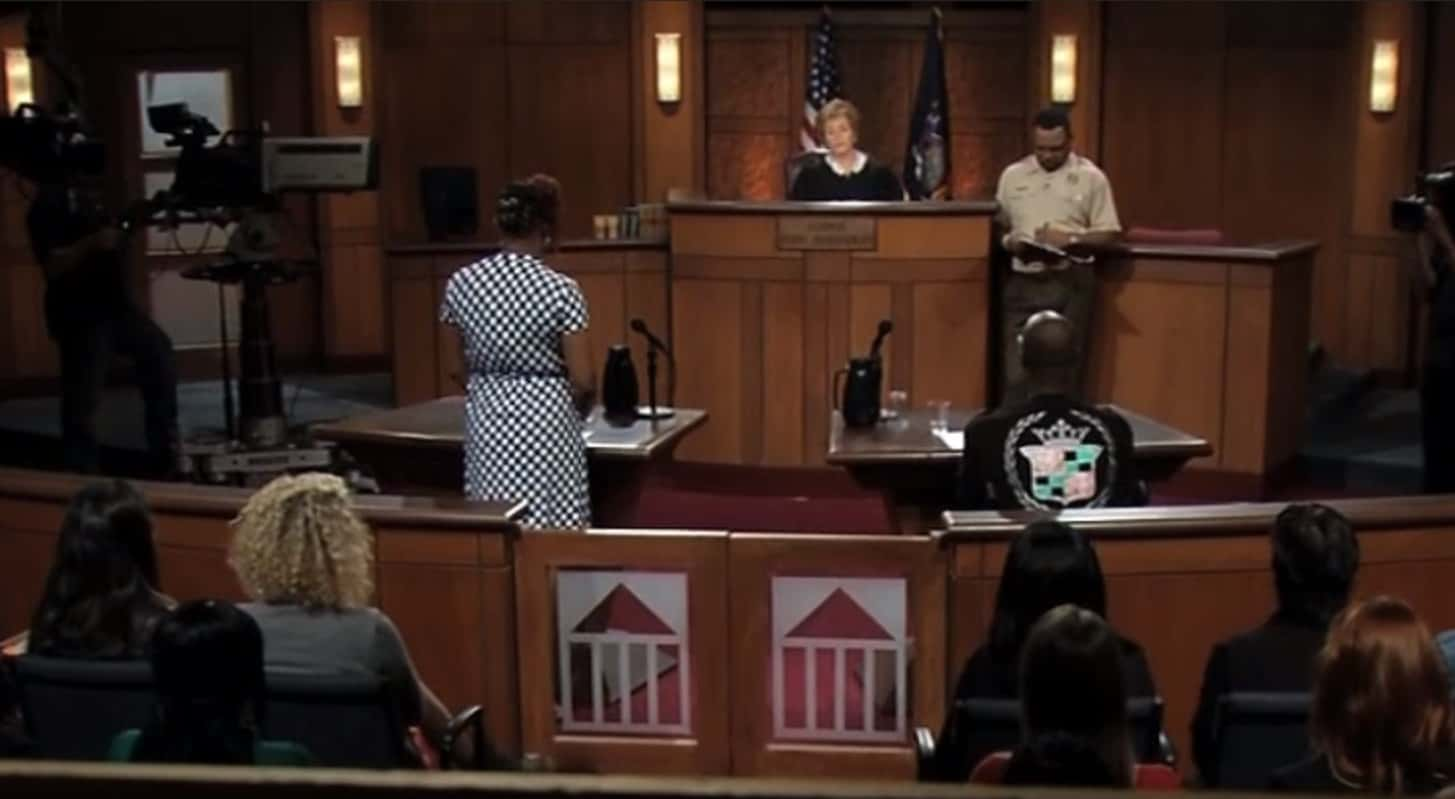 Paramount, Judge Judy (1996-2021)
Paramount, Judge Judy (1996-2021)
16. Judy keeps it casual.
Sheindlin has been known to chastise litigants who come to her courtroom in skimpy clothing or “beach attire.” Funny enough, she often sports jeans and a t-shirt under her robe.
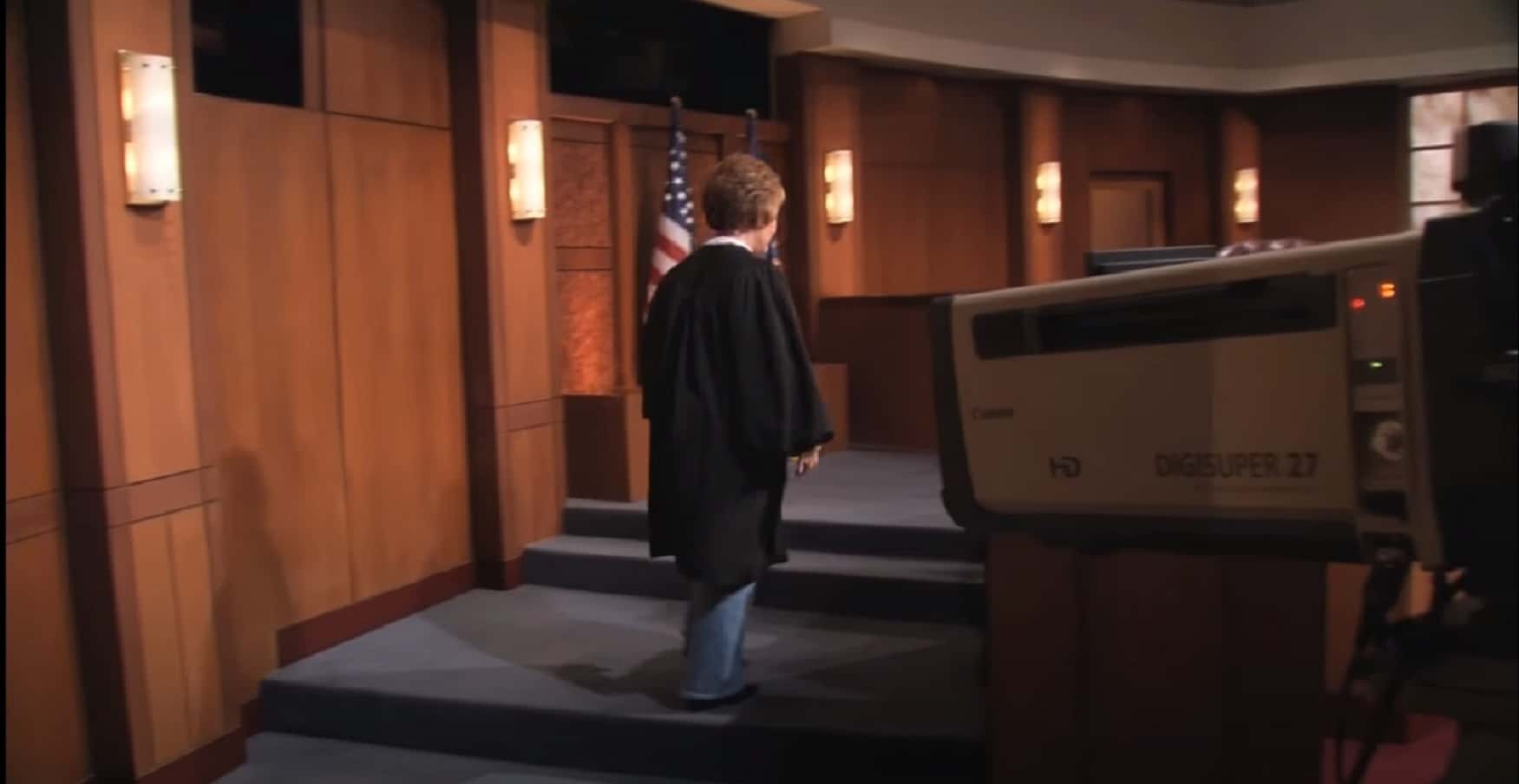 Paramount, Judge Judy (1996-2021)
Paramount, Judge Judy (1996-2021)
17. Oh, Byrd.
Officer Byrd is a real bailiff who first worked with Judge Sheindlin in the Manhattan Family Court. “We used to call her the Joan Rivers of the judicial system. She was just hilarious.” When he heard about Judith’s TV program, he sent his old colleague a congratulatory letter and added, “If you need a bailiff, I still look good in uniform.”
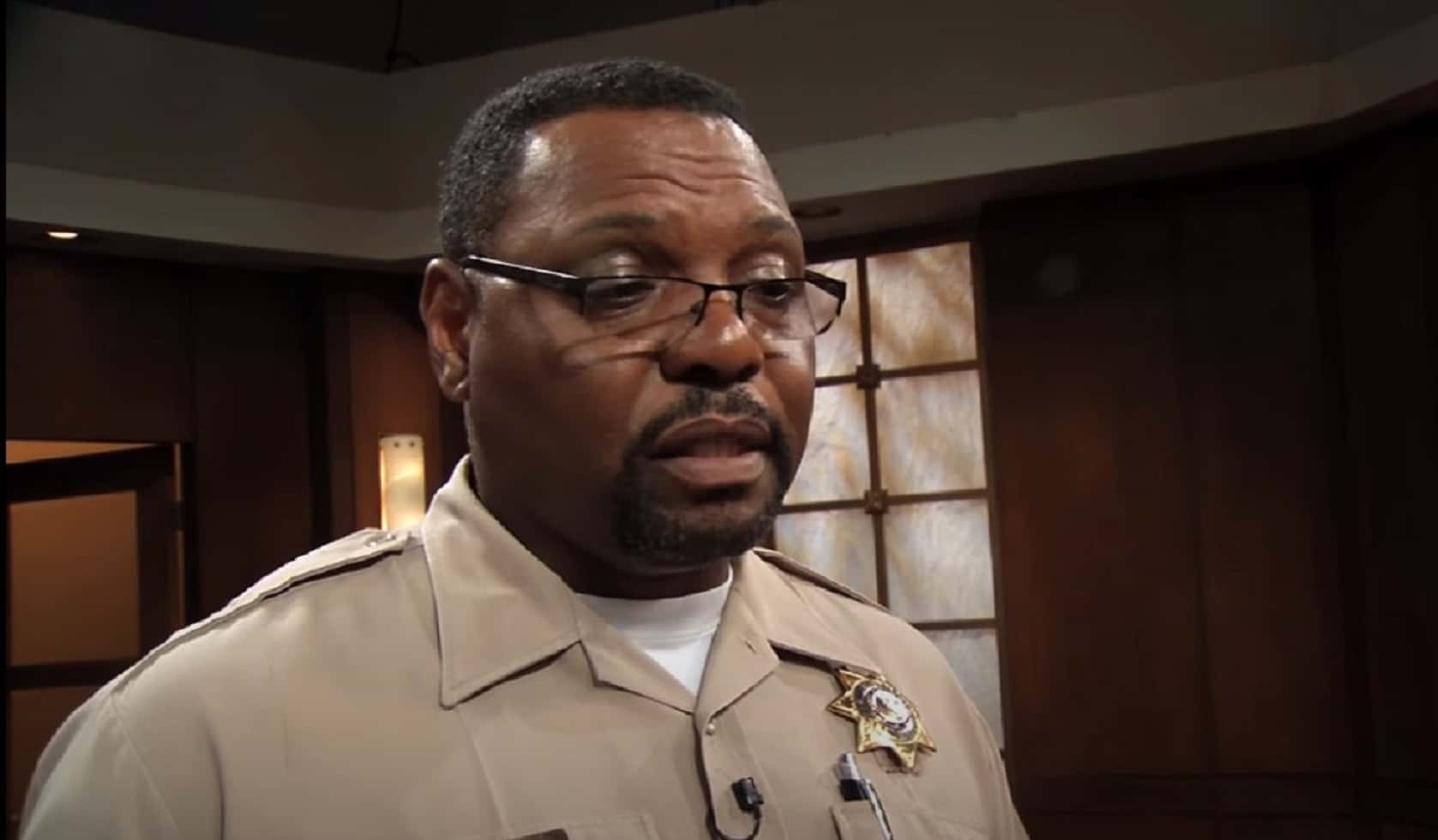 Paramount, Judge Judy (1996-2021)
Paramount, Judge Judy (1996-2021)
18. Bad Byrd.
Officer Byrd almost lost himself the job for imitating his boss. He donned her robe and reading glasses to entertain his co-workers with a barrage of Judyisms. Midway through his impersonation, he was caught in the act.
19. High-profile cases.
Actress Roz Kelly (Pinky Tuscadero on Happy Days) appeared on the show in 1996 as the plaintiff. She sued her plastic surgeon for a leaky breast implant that impeded her acting career.
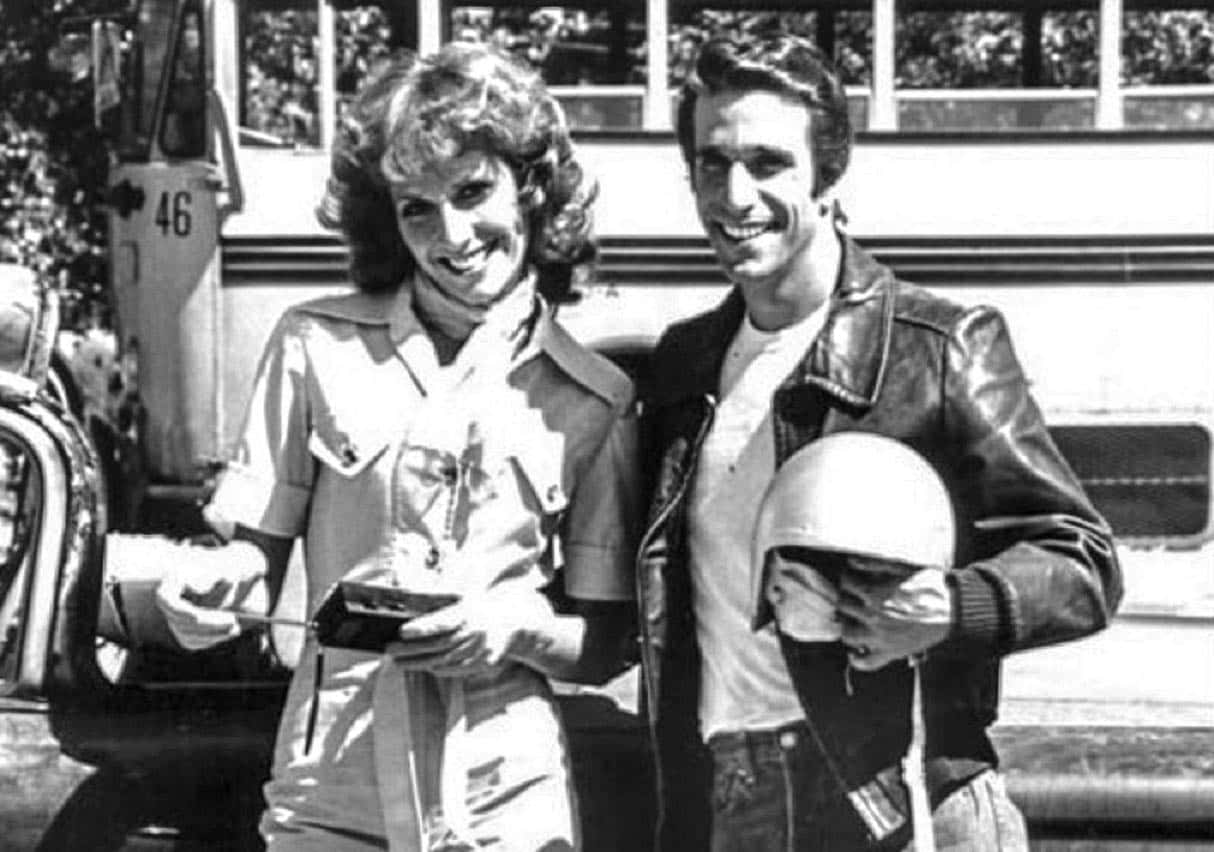 ABC Television, Wikimedia Commons
ABC Television, Wikimedia Commons
20. More High-profile cases.
Sex Pistol John “Johnny Rotten” Lydon appeared when drummer Robert Williams sued him for lost wages and an assault. Despite Lydon’s bad behaviour in the courtroom, Judy ruled in his favor.
 Ed Vill from Caracas, CC BY 2.0, Wikimedia Commons
Ed Vill from Caracas, CC BY 2.0, Wikimedia Commons
21. Hot Bench?
Sheindlin wanted to call her show “Hot Bench.” The producers wisely advised her that the term was meaningless to TV viewers who didn’t work in the legal system. Sheindlin later realized the wisdom in calling the show Judge Judy: she couldn’t be easily replaced, as the various judges had been on The People’s Court.
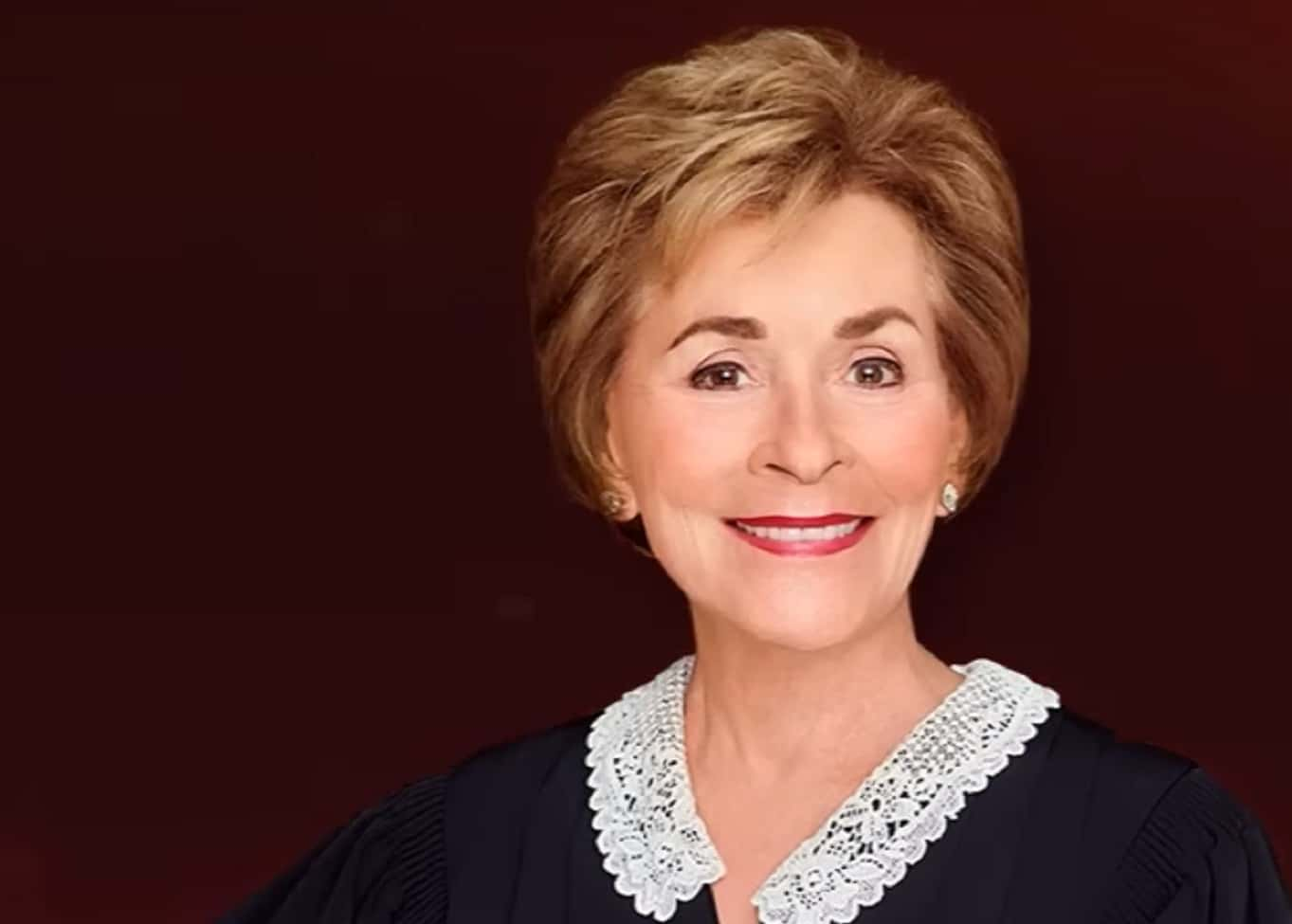 Paramount, Judge Judy (1996-2021)
Paramount, Judge Judy (1996-2021)
22. That’s Judge Sheindlin, thank you very much.
She doesn’t refer to herself as Judge Judy. She refers to herself “Judge Sheindlin” or “Judge Judy Sheindlin.”
23. Thanks, dad.
Judy credits her gift of gab to her beloved father, who was a dentist before the era of modern sedation. He had to become a top-notch storyteller to calm down nervous patients, and Judith learned from his dinner-table jokes and stories.
 Paramount, Judge Judy (1996-2021)
Paramount, Judge Judy (1996-2021)
24. Baller status.
Sheindlin is one of the highest paid TV stars. In 2012, she received a $45 million (USD) annual contract with CBS. In October of 2013, it was reported that Sheindlin earned $47 million per year for Judge Judy, making her the highest-paid TV star. This translates into more than $900,000 per workday.
25. Longevity.
“Judge Judy” has lasted longer than any competing court show, earing a place in the “Guinness World Records” as the longest-running such show in the court genre ever.
26. Recognition.
The show is the first high-rating court show to win an Emmy. By 2011, the show was nominated for a record 14 consecutive years. Though she wasn’t nominated in 2012, she came back swinging and earned nominations from 2013-2016.
27. Literary chops.
Sheindlin wrote a book in 1993 called “Don’t Pee On My Leg and Tell Me It’s Raining.” Her other books include Beauty Fades, Dumb is Forever (1999); Keep It Simple, Stupid: You’re Smarter Than You Look (2000); Win or Lose by How You Choose (2000); You’re Smarter Than You Look: Uncomplicating Relationships (2001); and What Would Judy Say? A Grown-Up Guide to Living Together With Benefits (2013); and What Would Judy Say: Be The Hero of Your Own Story (2014).
28. Click.
After Joseph Wapner was released from “The People’s Court” in 1993, Sheindlin approached the producers to suggest herself. She was hung-up on by the receptionist.
 Everett Collection, Shutterstock
Everett Collection, Shutterstock
29. Classical themes.
A modern version of a melody from Beethoven’s 5th Symphony was then adopted as the show’s opening theme song from the 2004-05 season.
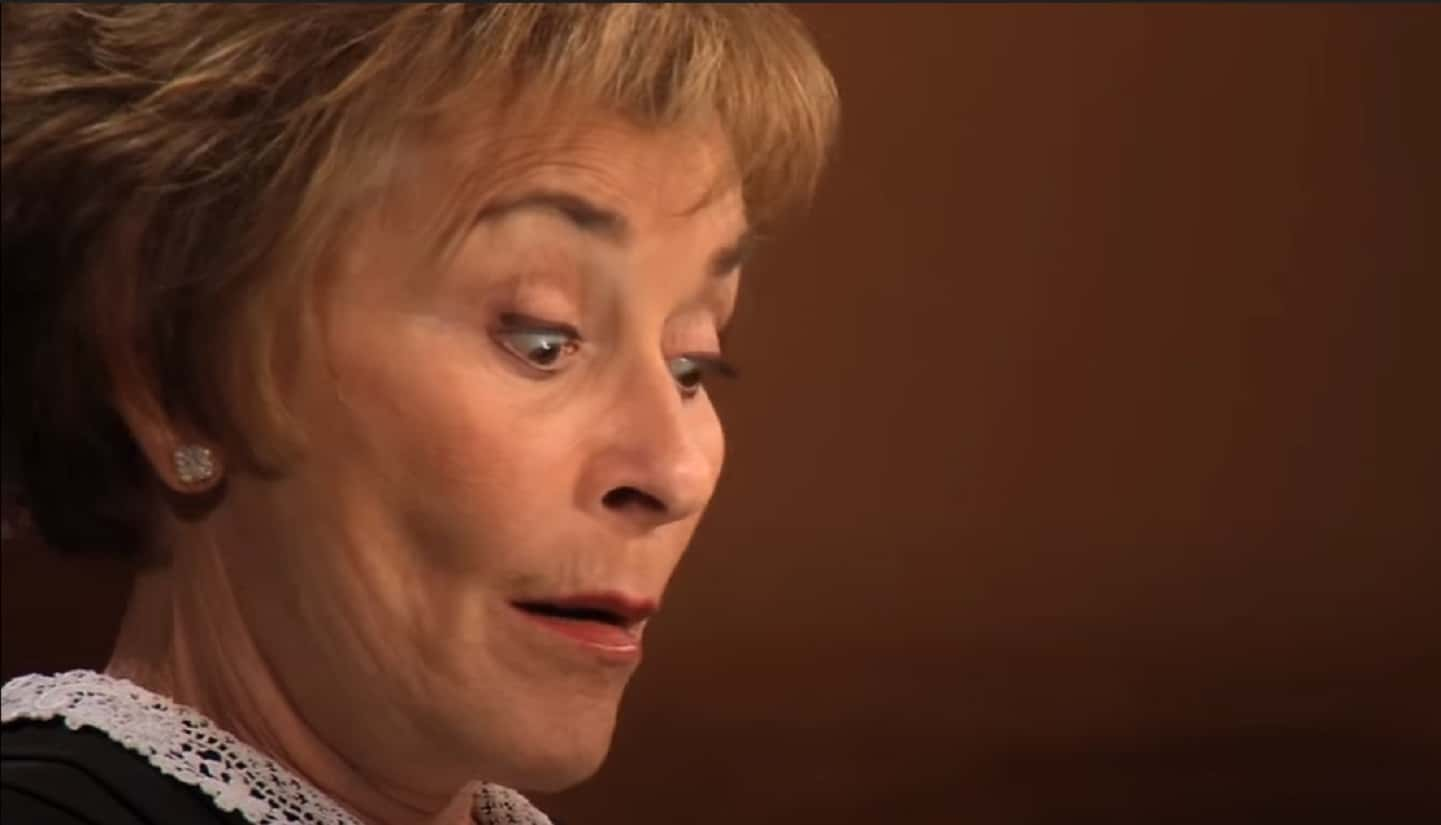 Paramount, Judge Judy (1996-2021)
Paramount, Judge Judy (1996-2021)
30. Famous voices.
The voice-over at the beginning of each show (“You are about to enter the courtroom of Judge Judith Sheindlin. The people are real. The cases are real. The rulings are final. This is Judge Judy”) belongs to voice-over artist Jerry Bishop.
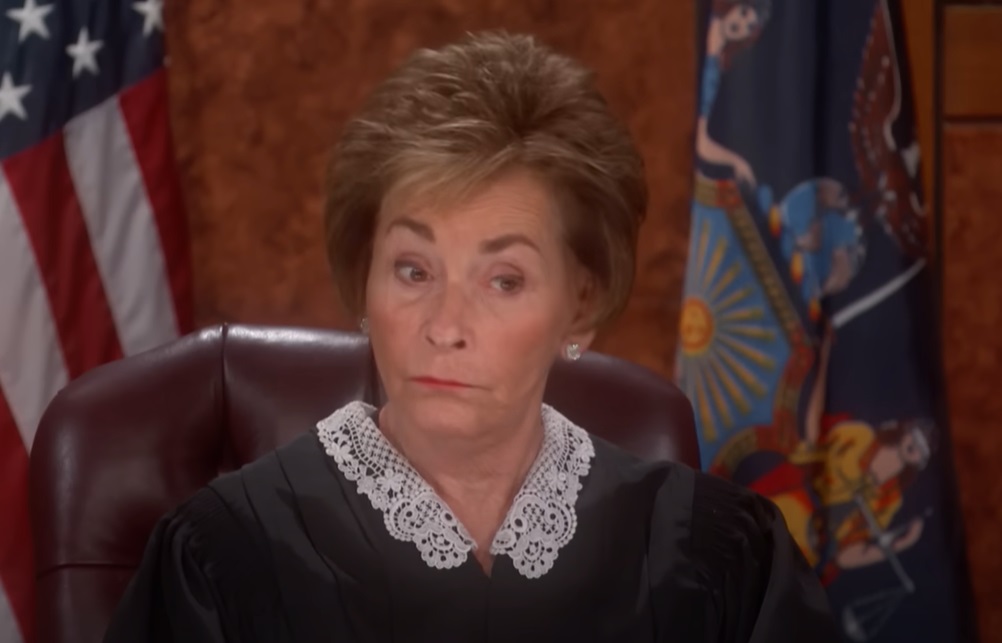 Paramount, Judge Judy (1996-2021)
Paramount, Judge Judy (1996-2021)
31. Bring it on, hubby!
Due to the popularity of “Judge Judy” the producers of The People’s Court decided to replace Ed Koch (the mayor who first appointed Judy to the bench in 1982) with Judy’s husband, Jerry Sheindlin. For the 1999-2000 season, husband and wife competed for ratings each afternoon. Jerry was dropped in the fourth season. Judy is still going strong.
32. Holly crap, Byrd!
While people may not be shocked to learn the Judge Judy is one of the highest-paid TV stars, they may be surprised that Byrd has a personal net worth of $3.5 million. Though known as the world’s richest bailiff, he refuses to reveal his annual salary.
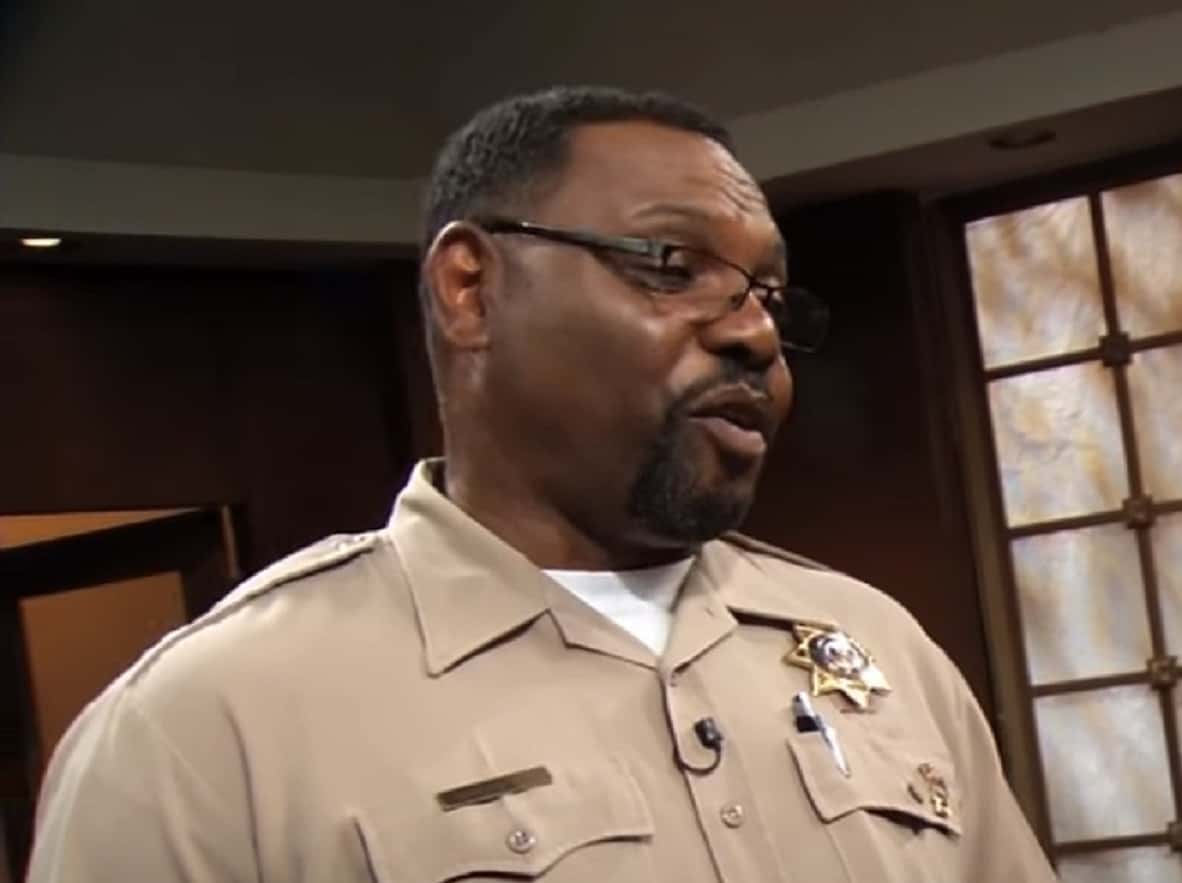 Paramount, Judge Judy (1996-2021)
Paramount, Judge Judy (1996-2021)
33. That’s cute, Byrd. Let momma show you how it’s done.
Sheindlin has an estimated net worth of $290 million, according to Forbes. She has an $8.6 million-dollar home in Florida and a $13.2 million-dollar home in Connecticut.
34. On Social Media
Judge Judy made waves when she weighed in on the consequences of social media, and what she thinks it's doing to society. You can see the video of what she said below.
 Paramount, Judge Judy (1996-2021)
Paramount, Judge Judy (1996-2021)
35. Charity first.
Sheindlin funds the Her Honor Mentoring Program for Young Girls. The program was founded by Nicole Sheindlin, Judy’s daughter, in 2006.
The programs mission: “Her Honor Mentoring provides a platform for young women to reach their full potential. Practical skills to realize a life full of promise are attained through a structured framework for learning and growth. Our program reinforces the importance of a college education and ultimately, a meaningful profession. The legacy of this esteemed program is apparent in the many lives it influences.”
36. Taking legal action.
The only lawsuit filed by Sheindlin was against a Connecticut personal injury lawyer, John Haymond. She accused him of unlawfully suggesting Judge Jury endorsed him. The proceeding settled out of court with a donation to Sheindlin’s charity of choice.
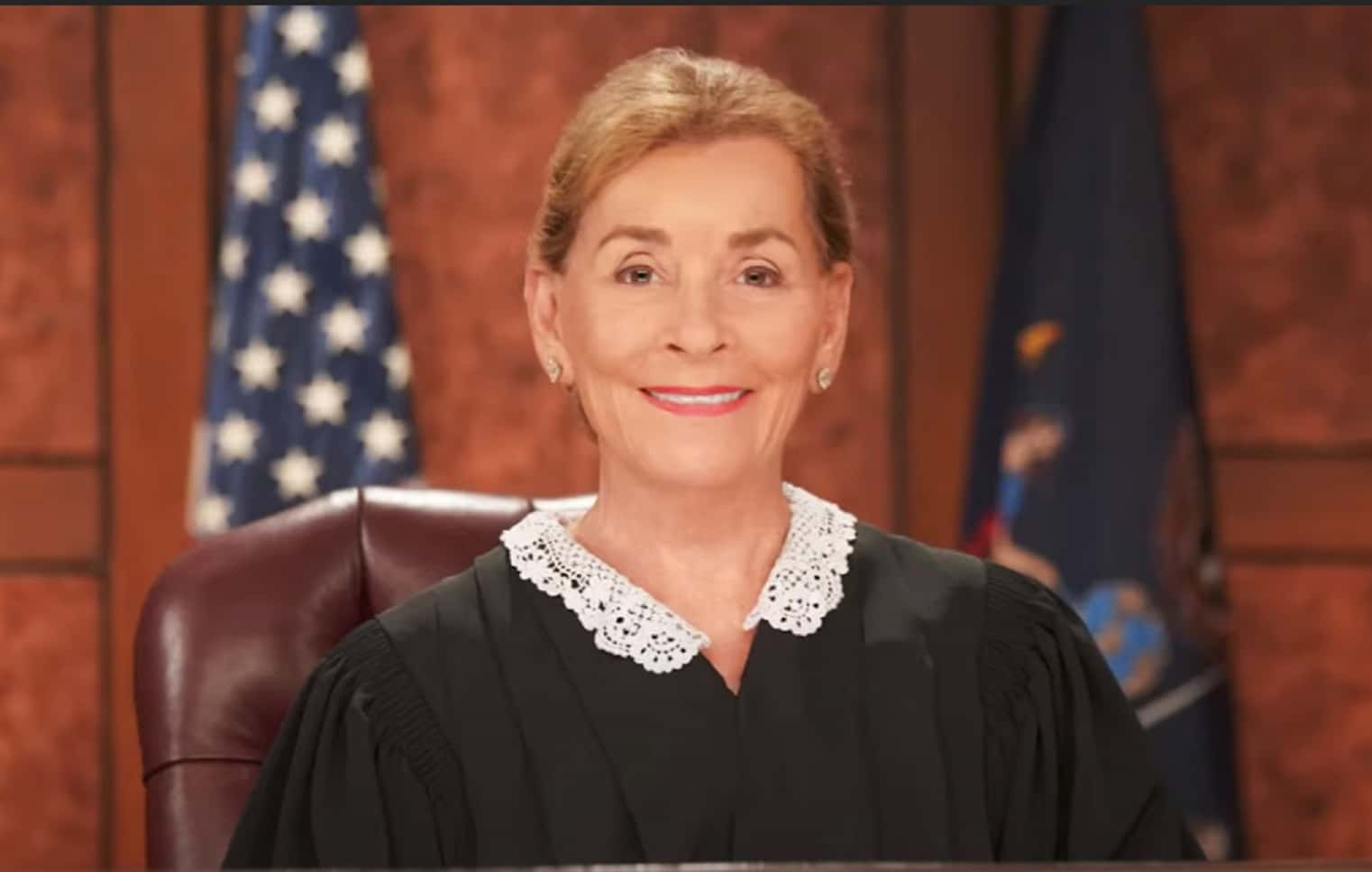 Paramount, Judge Judy (1996-2021)
Paramount, Judge Judy (1996-2021)
Order on the internet! Share this with your friends by clicking below!

